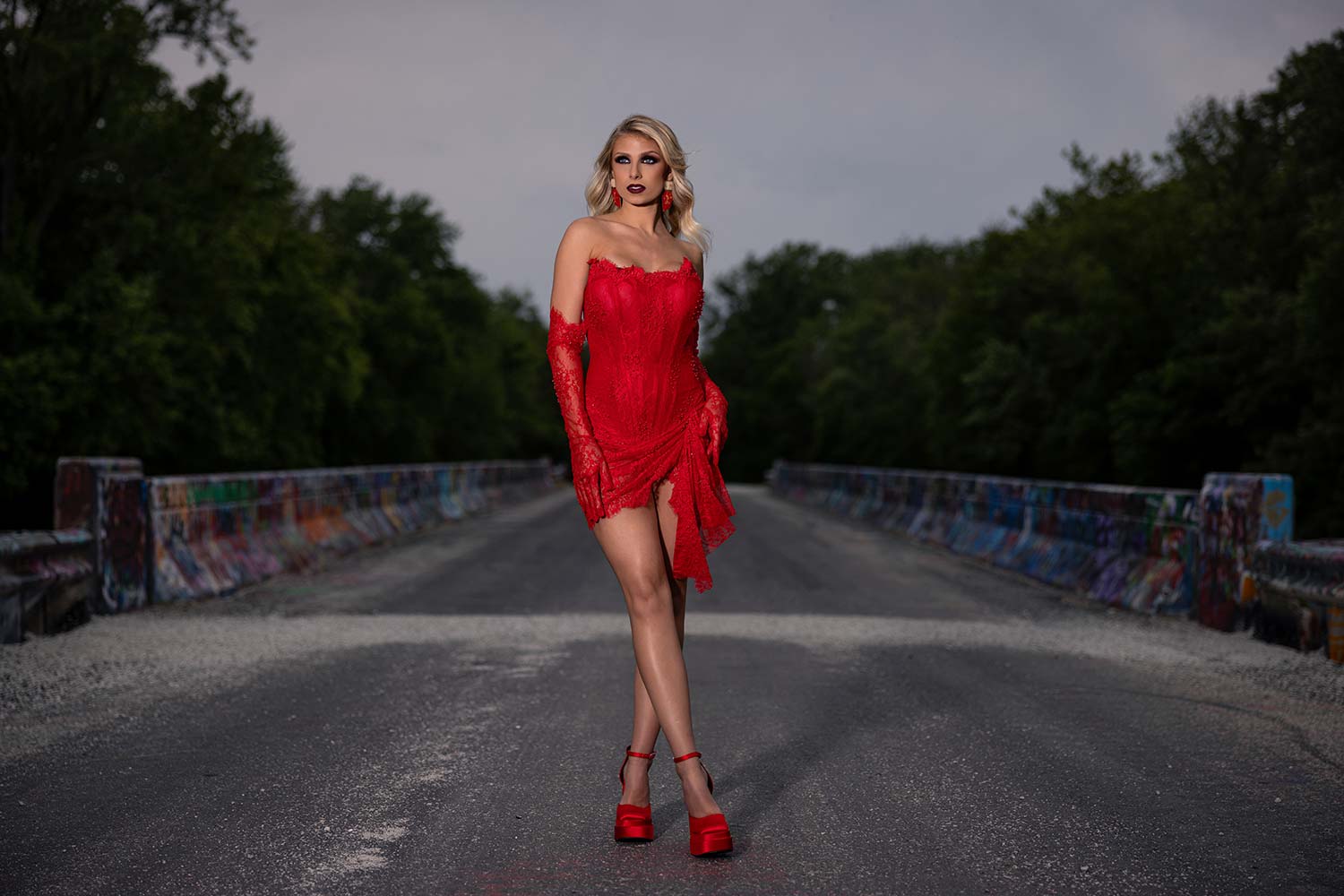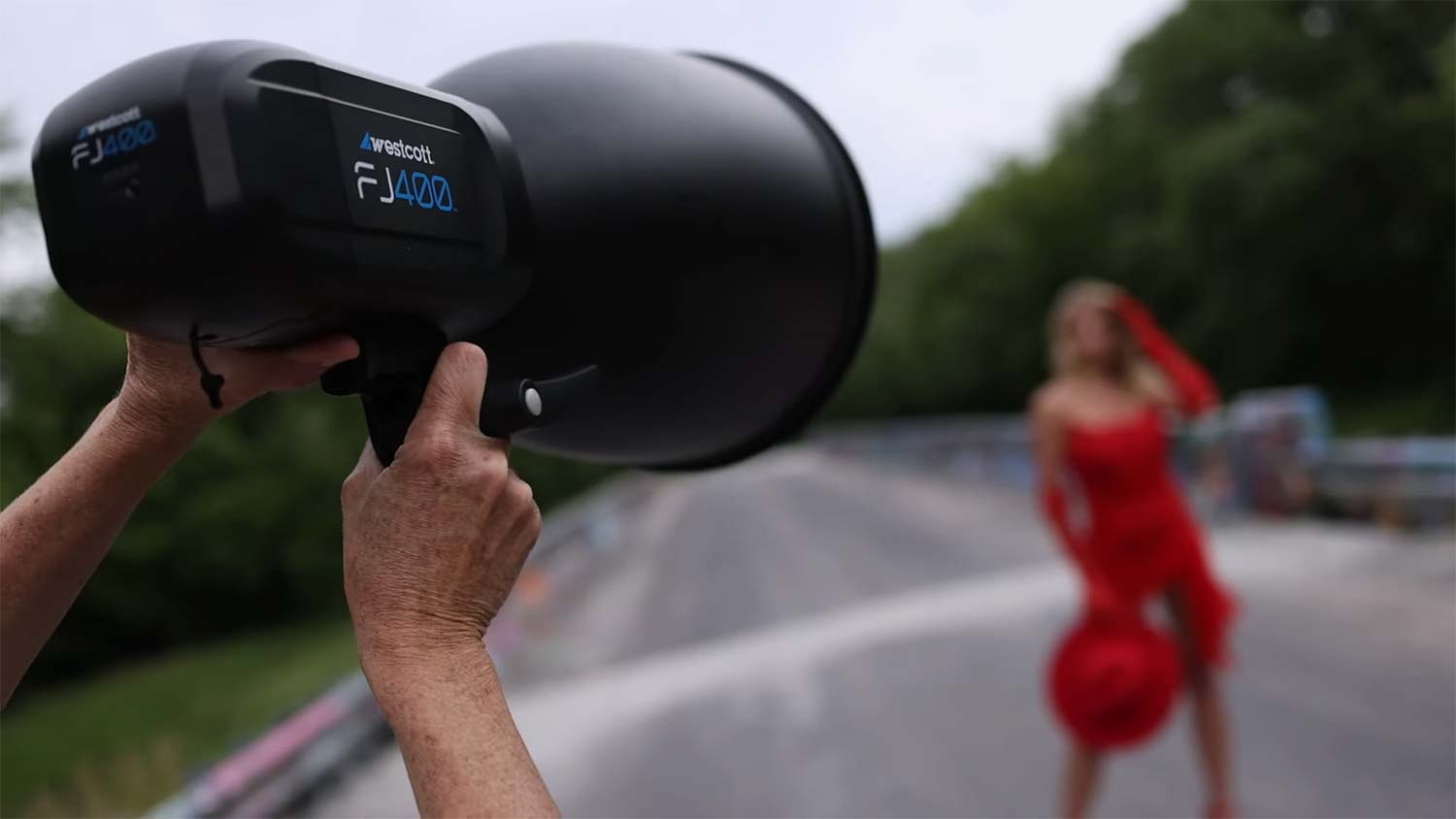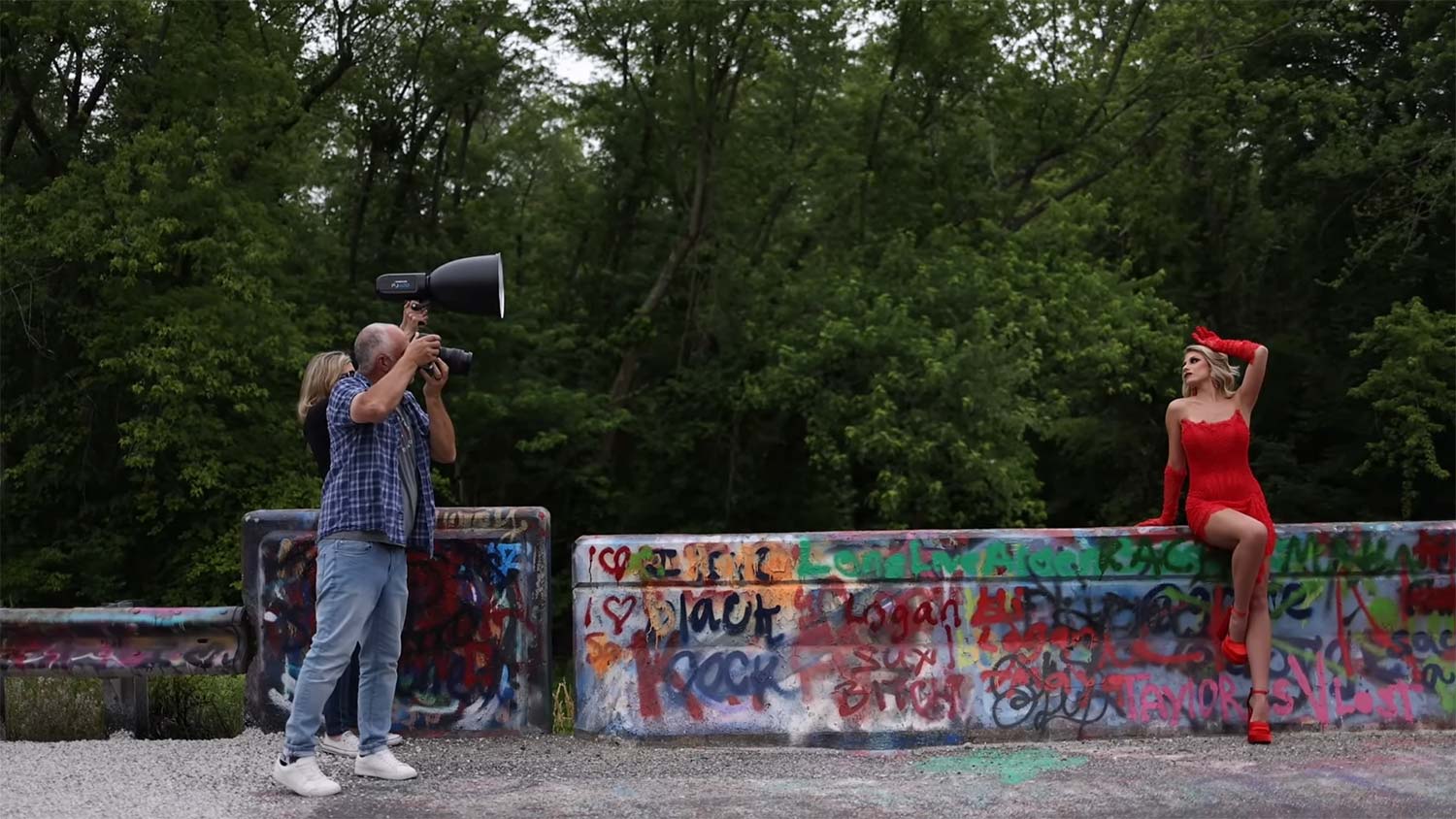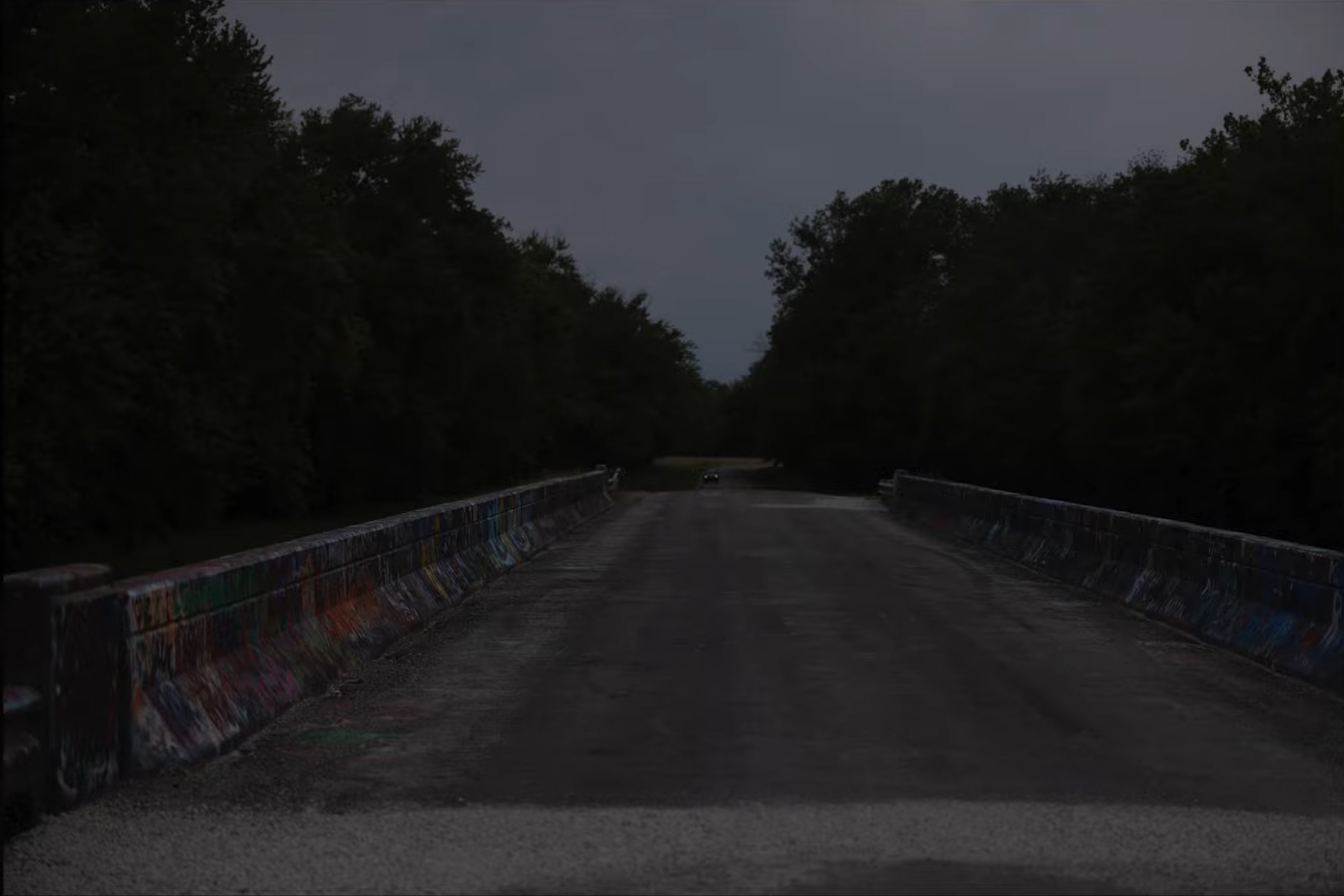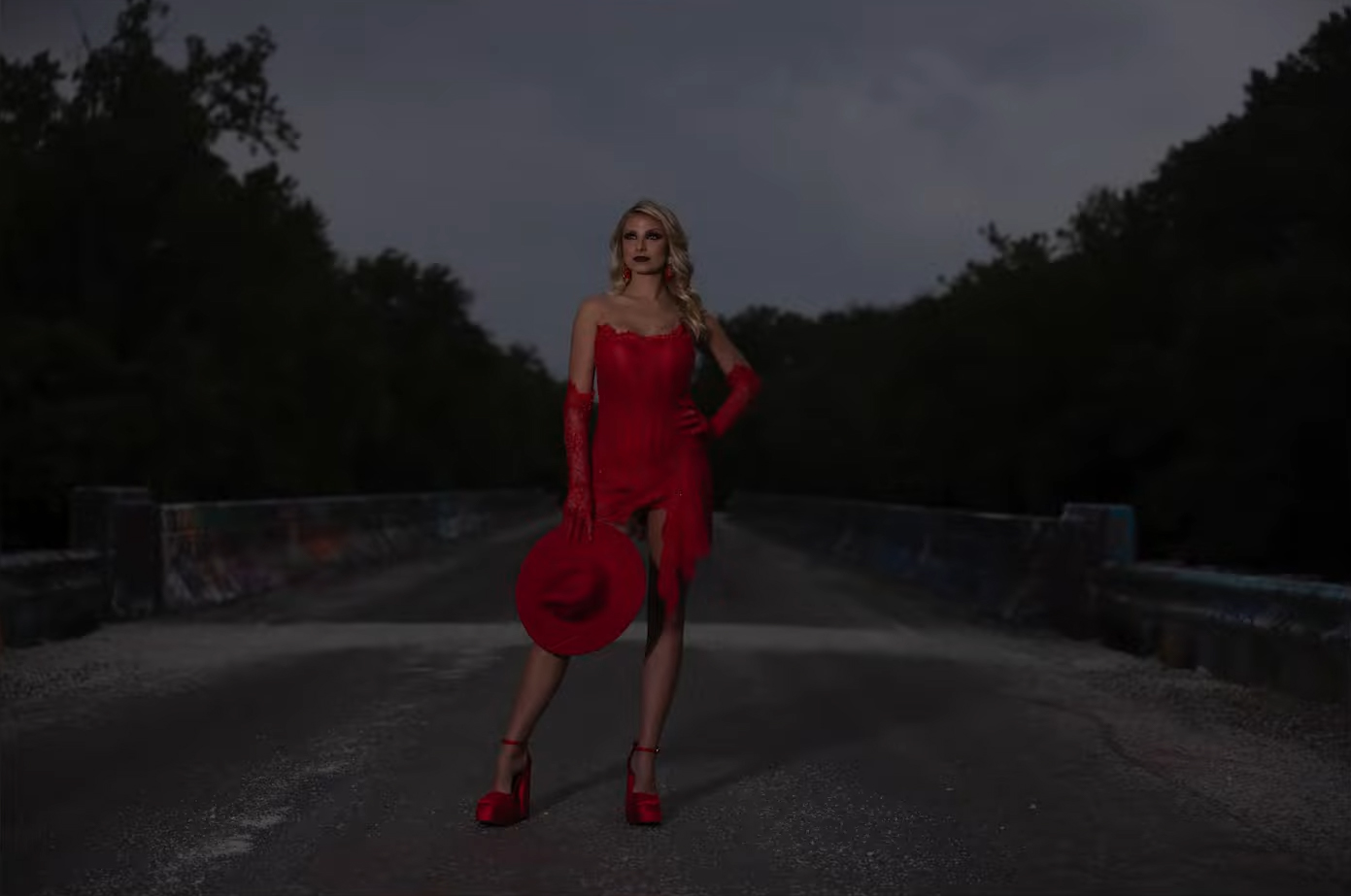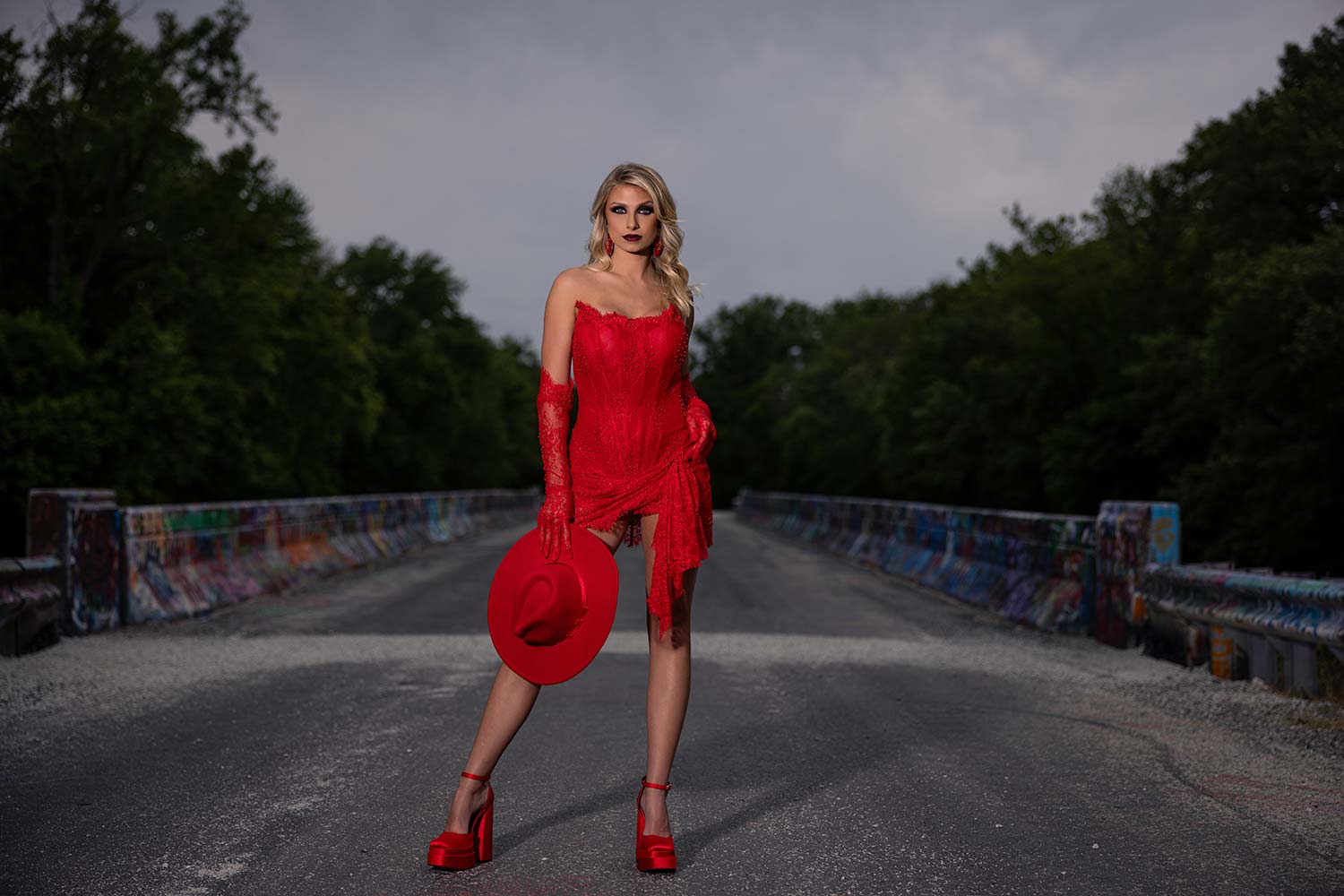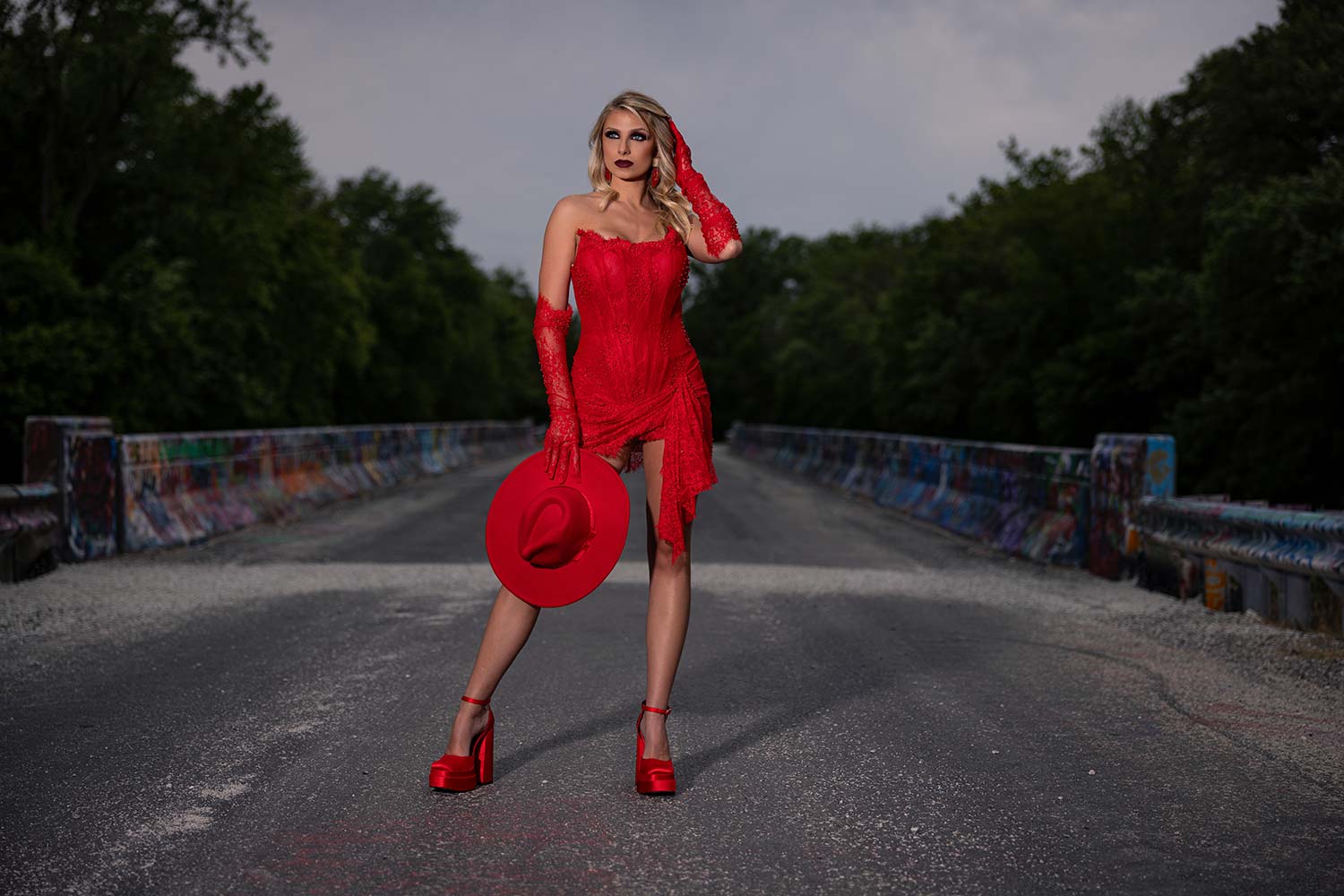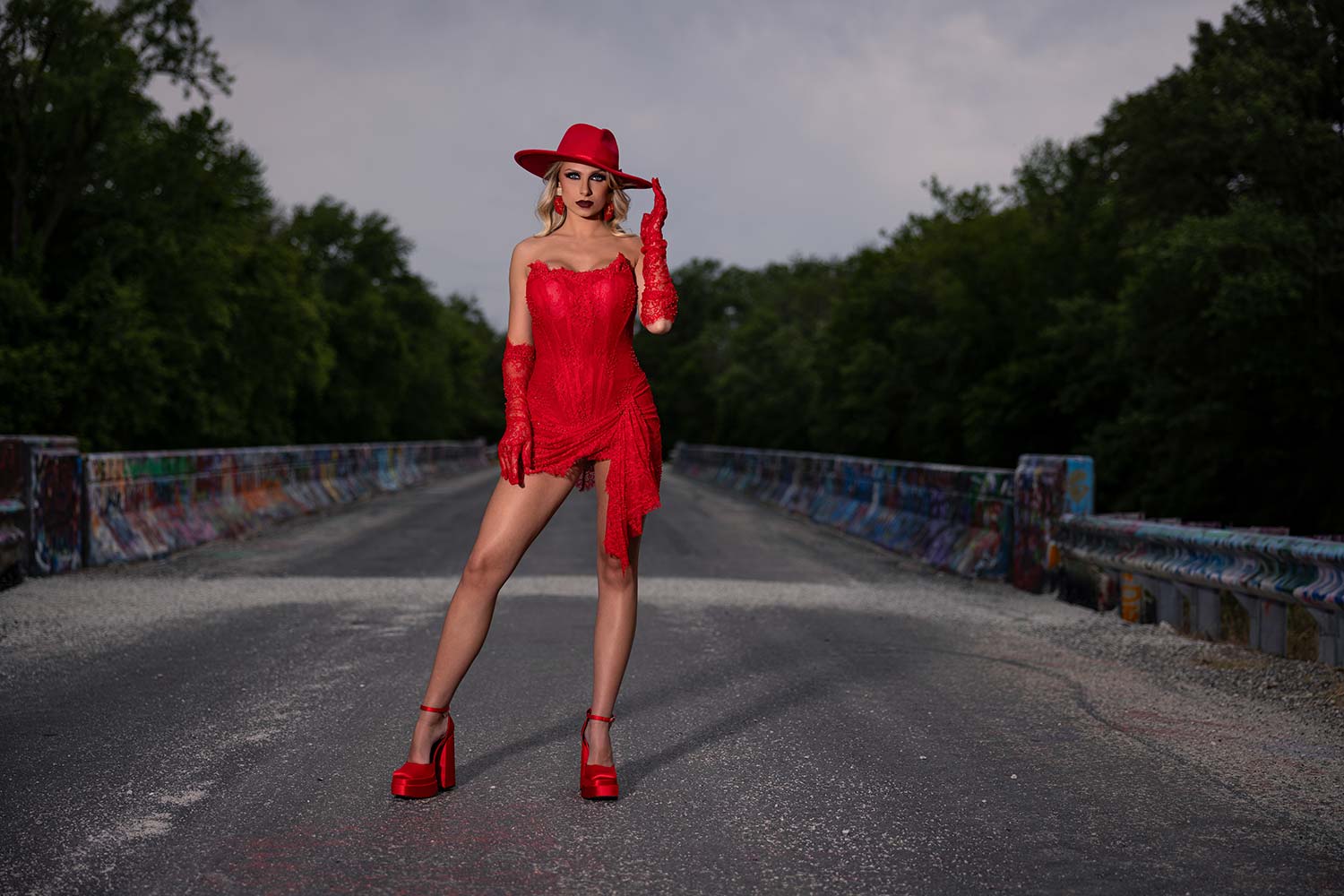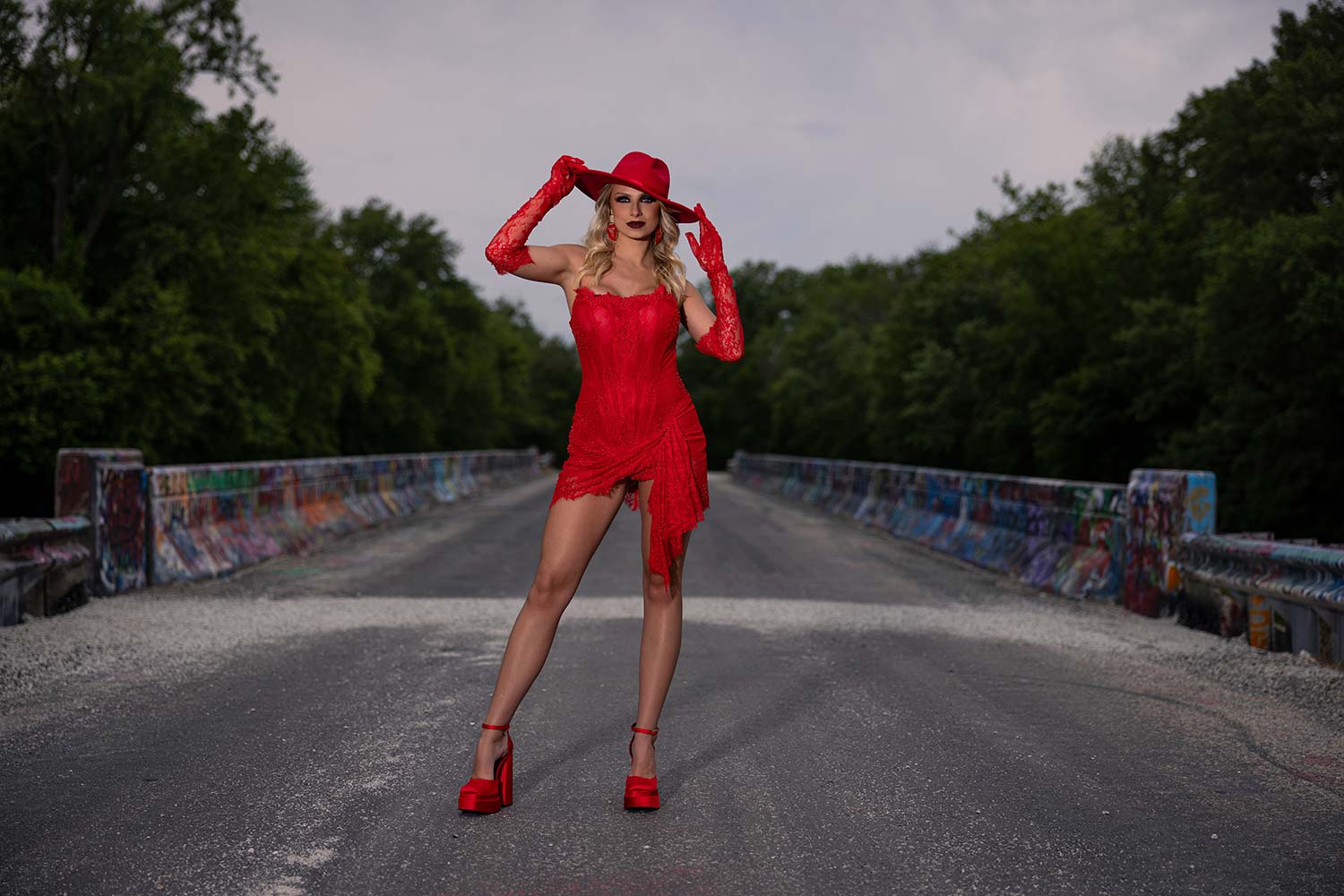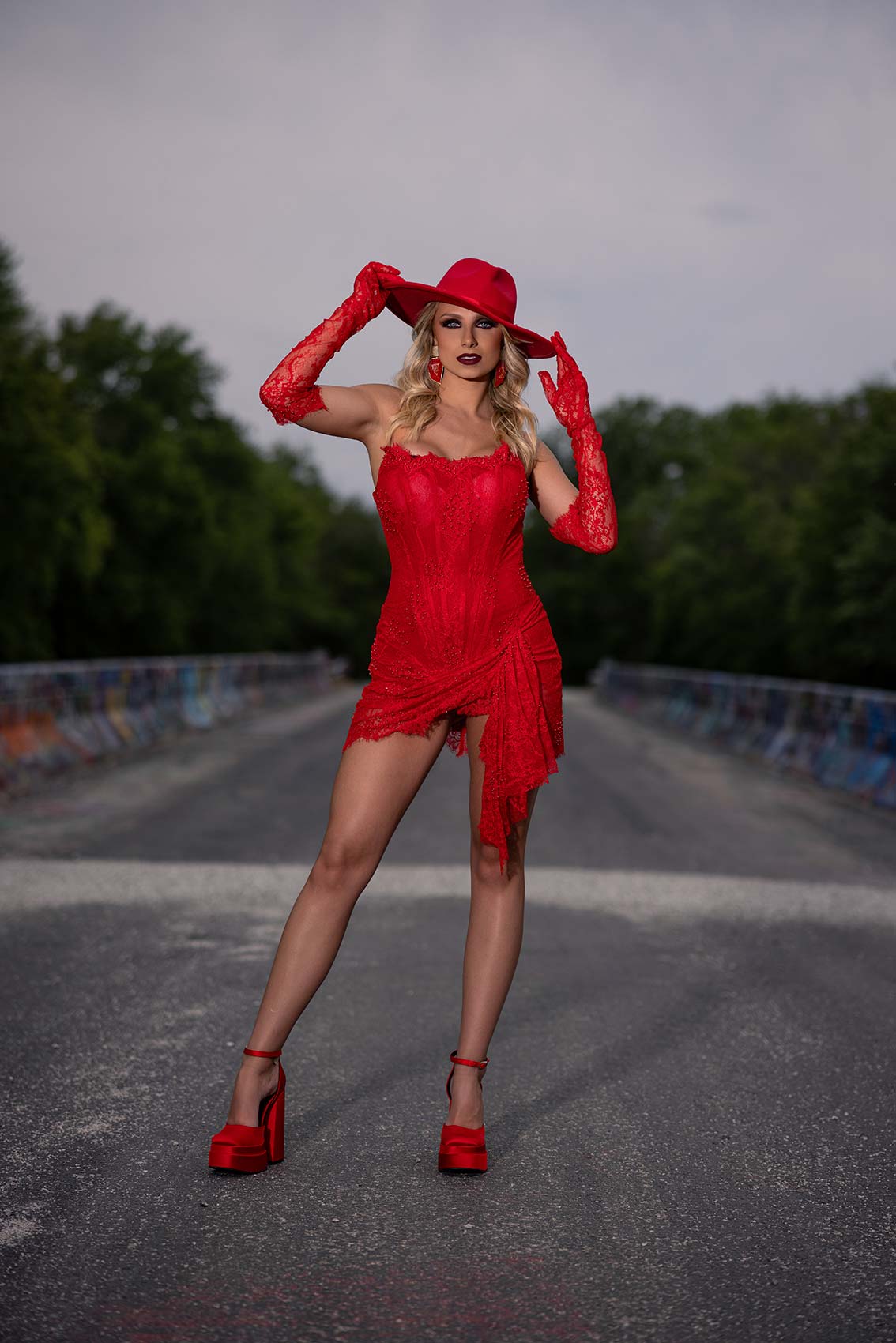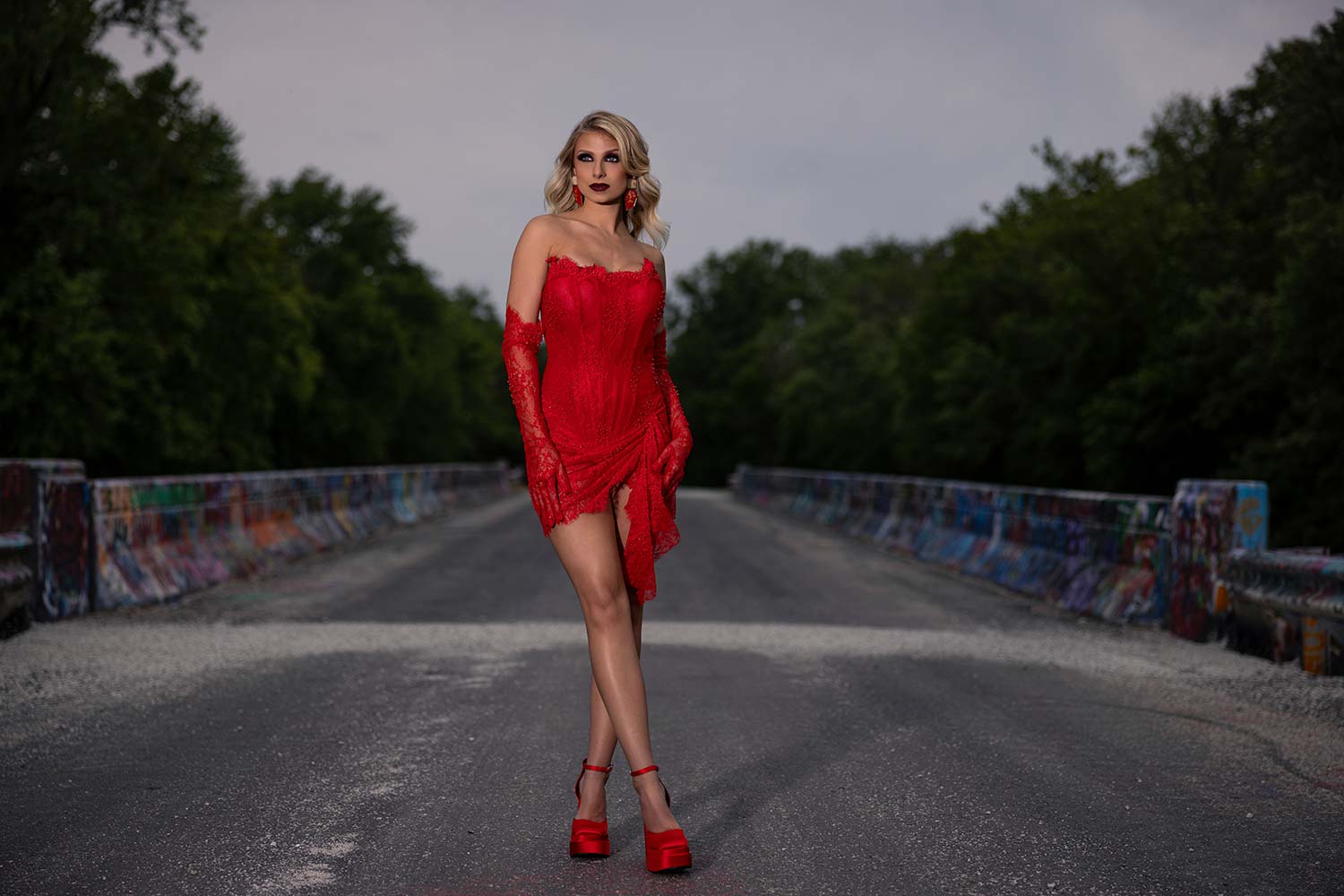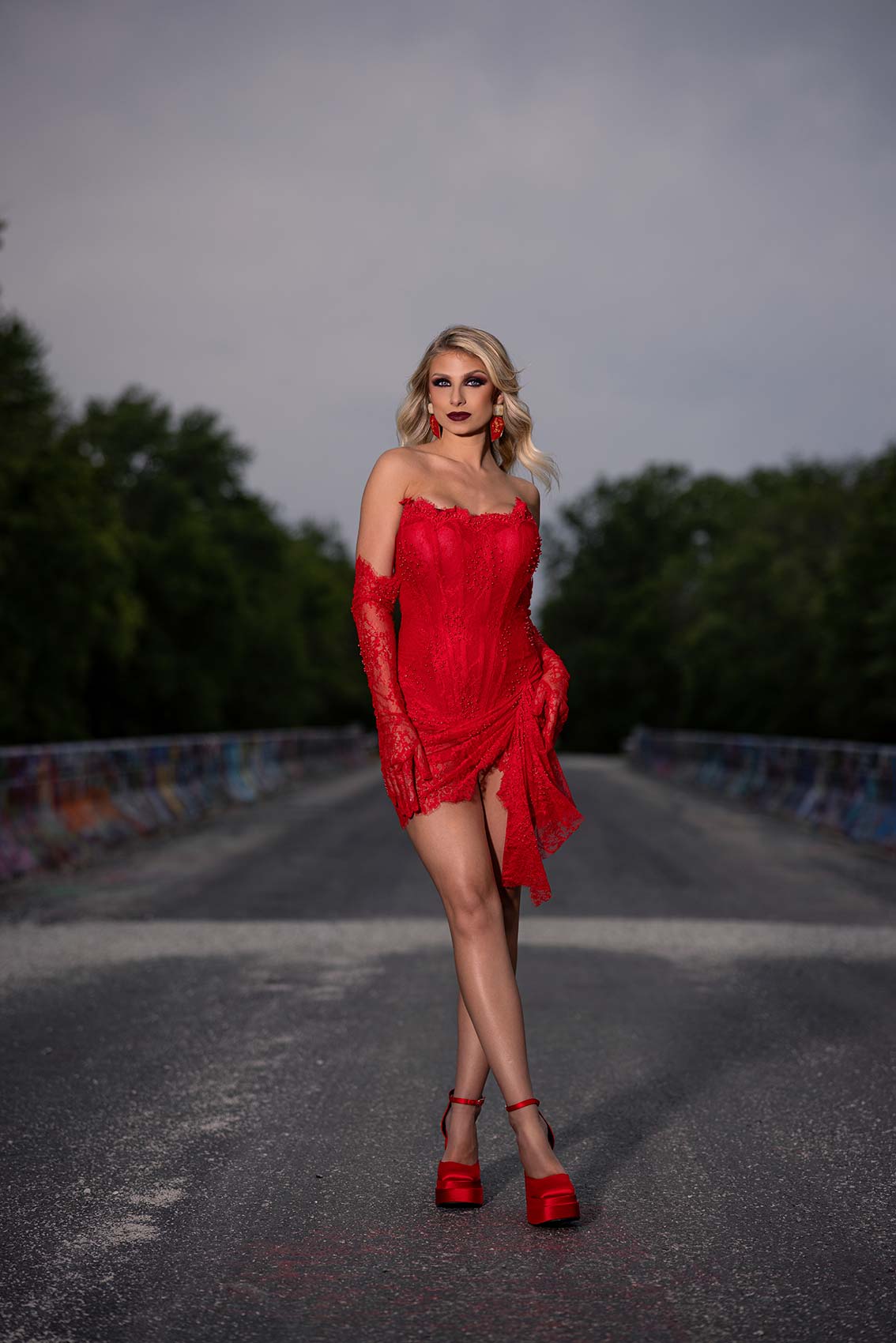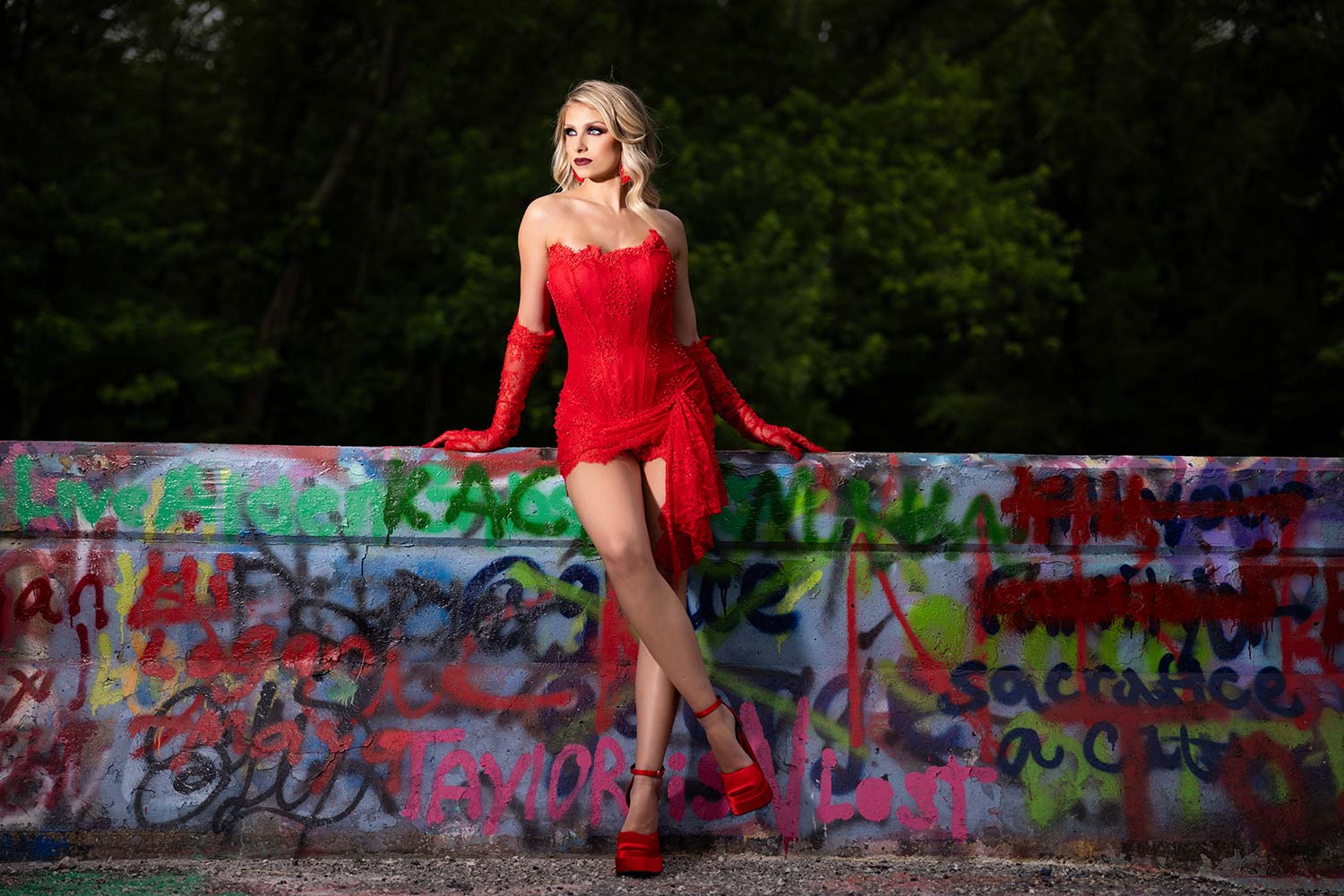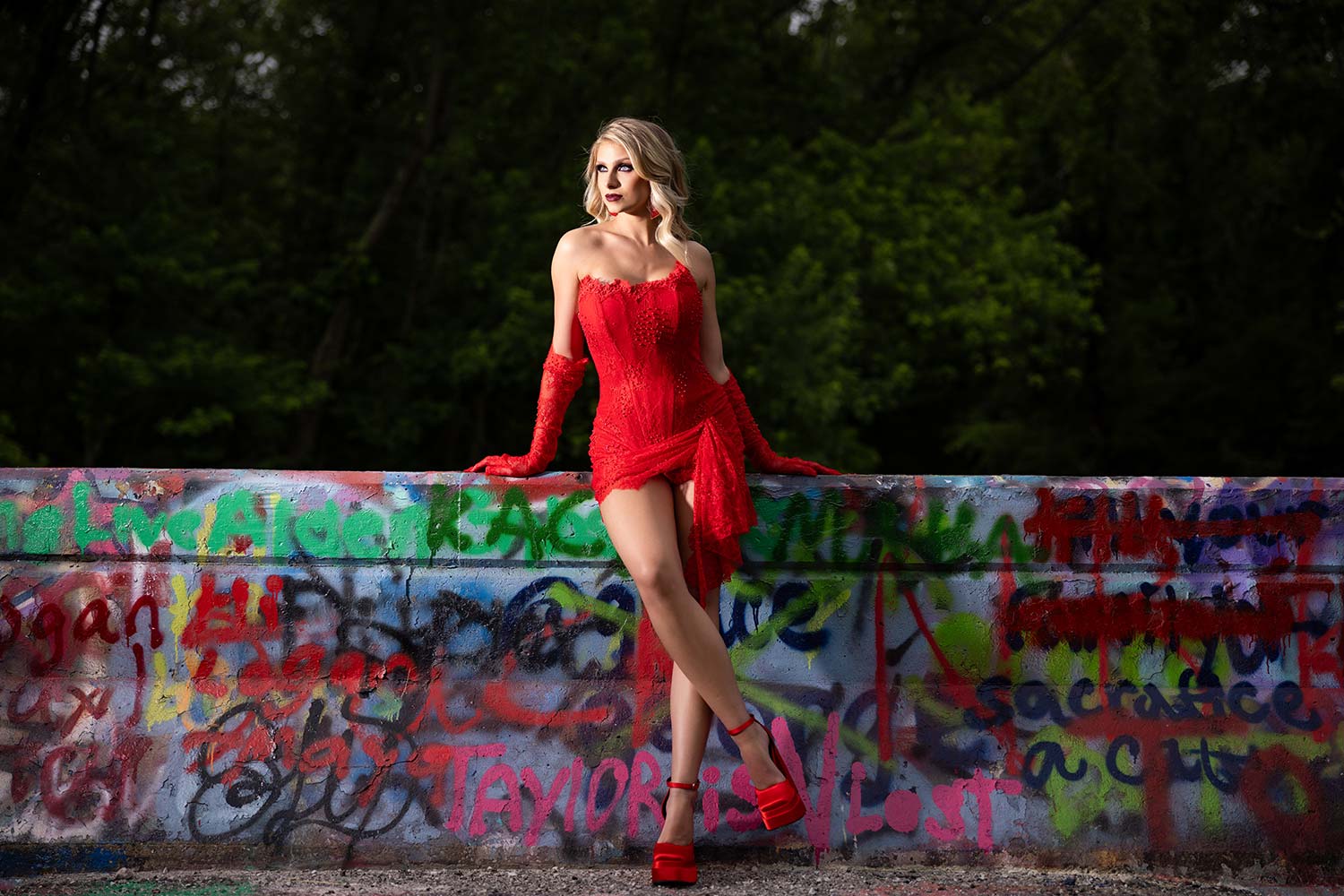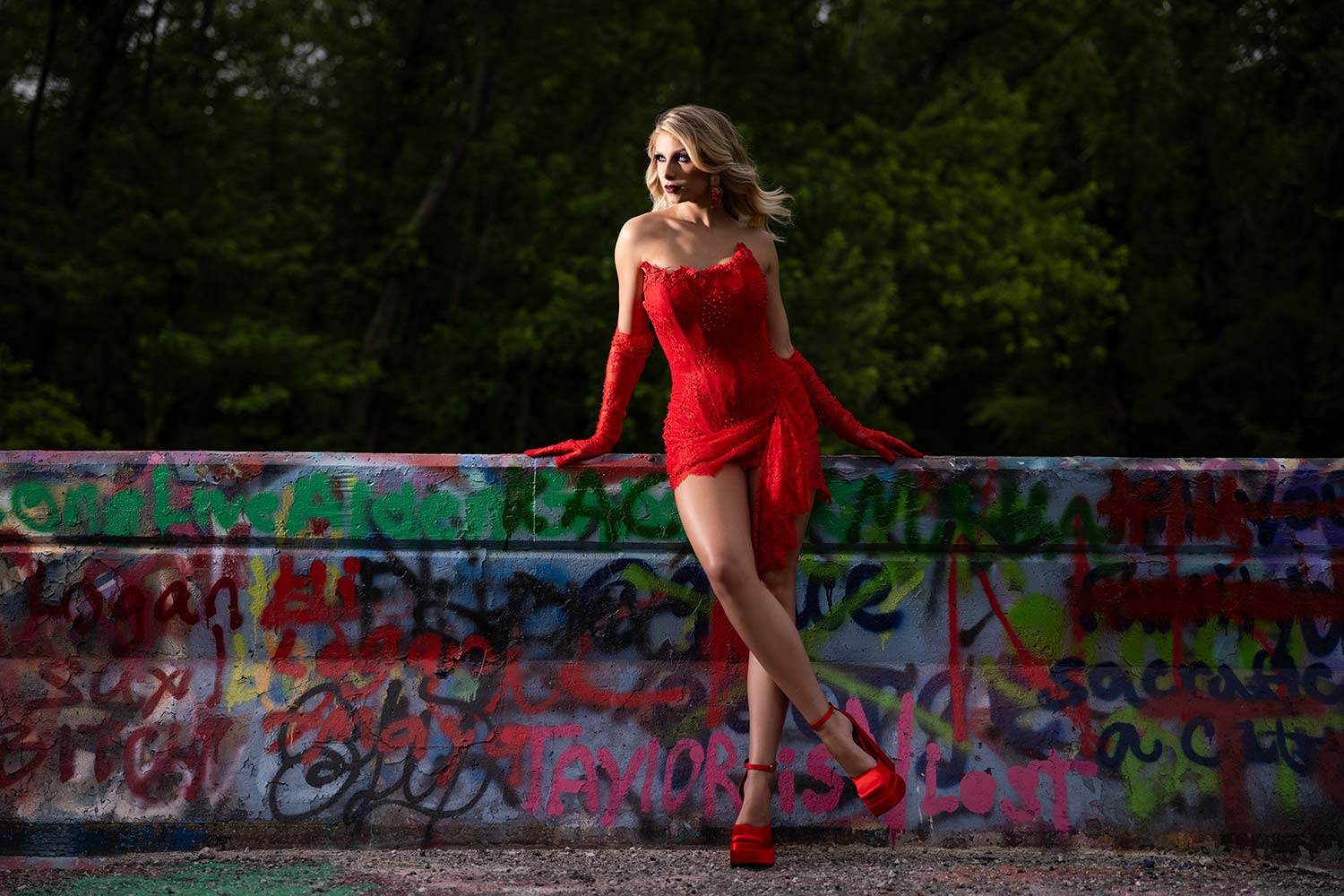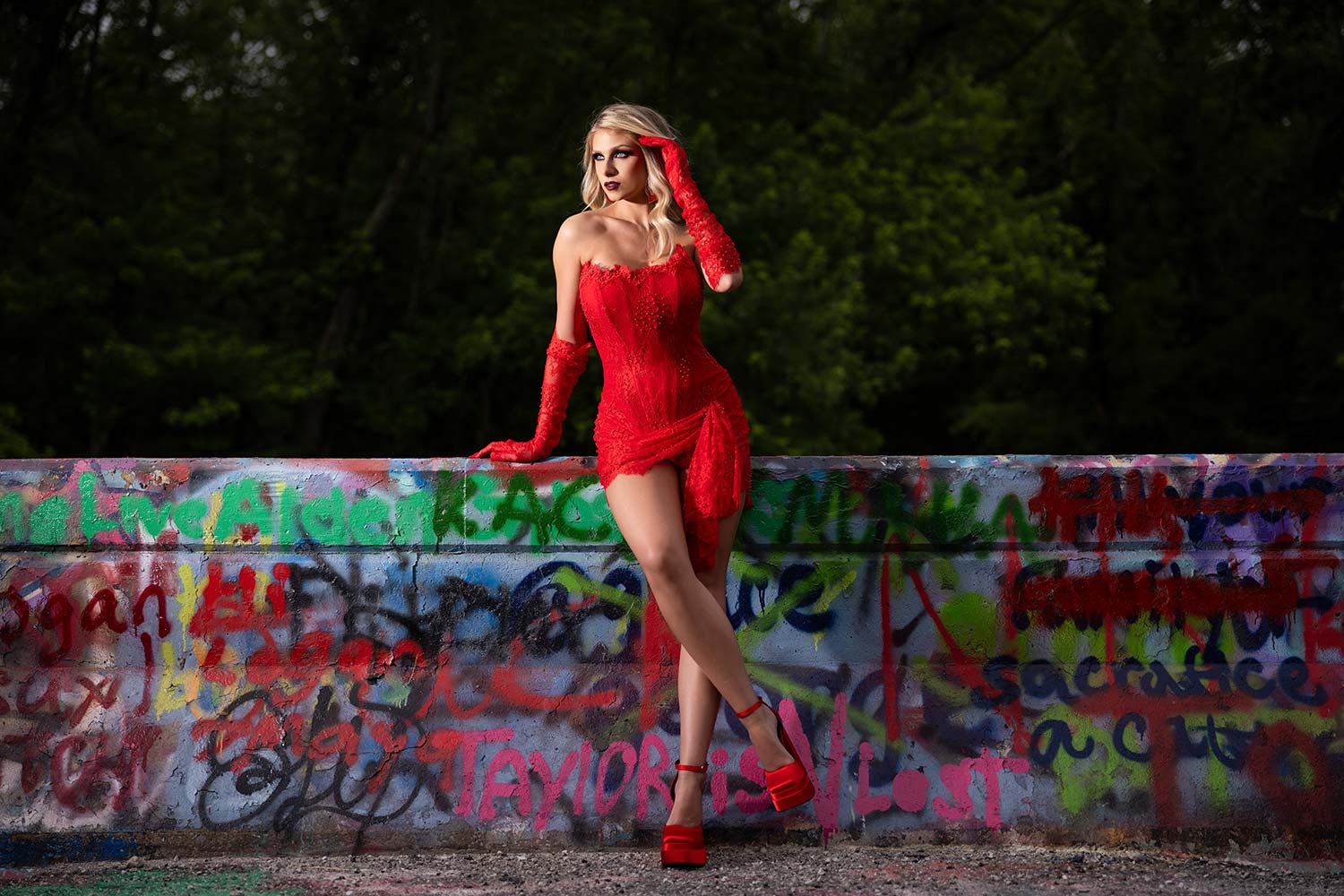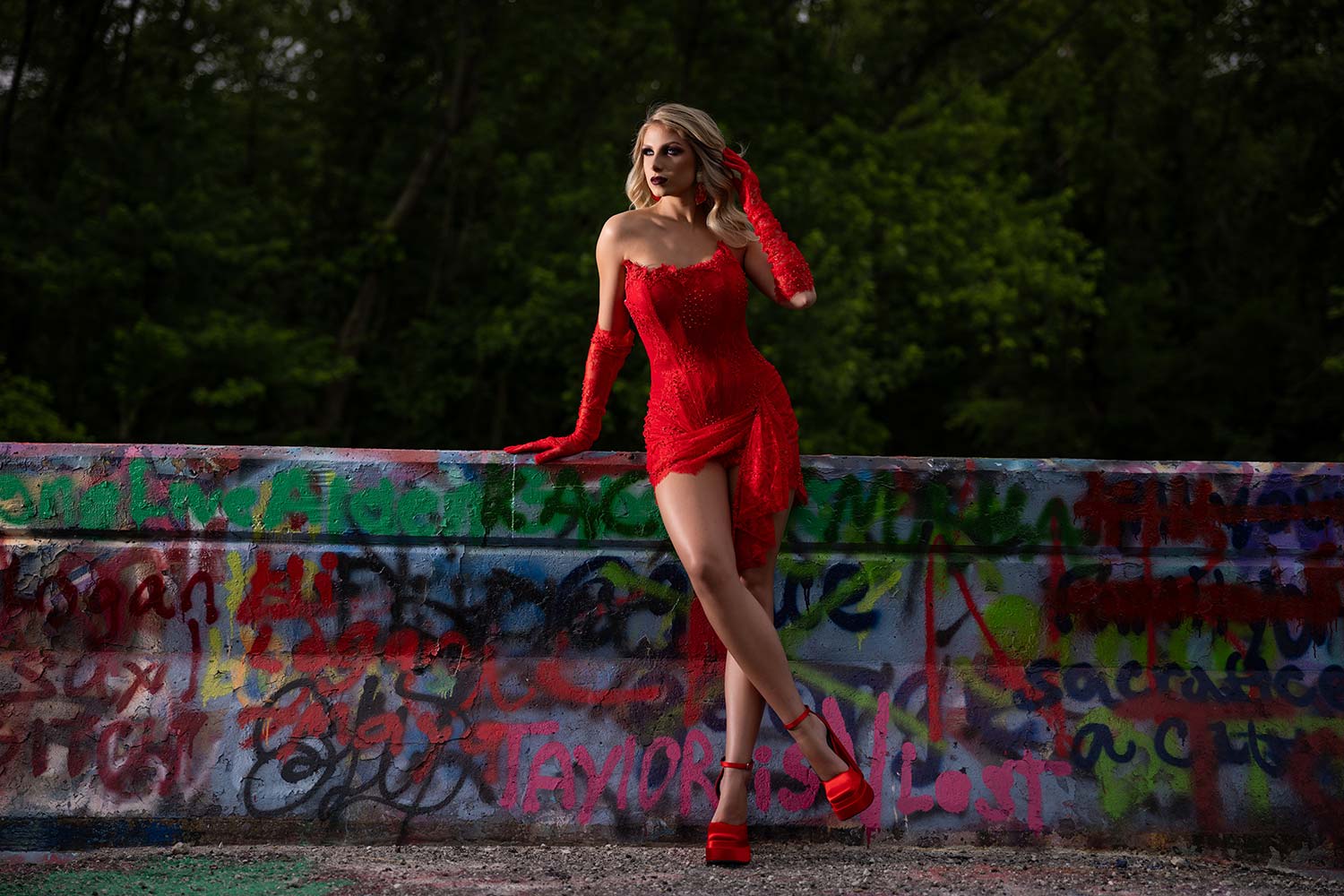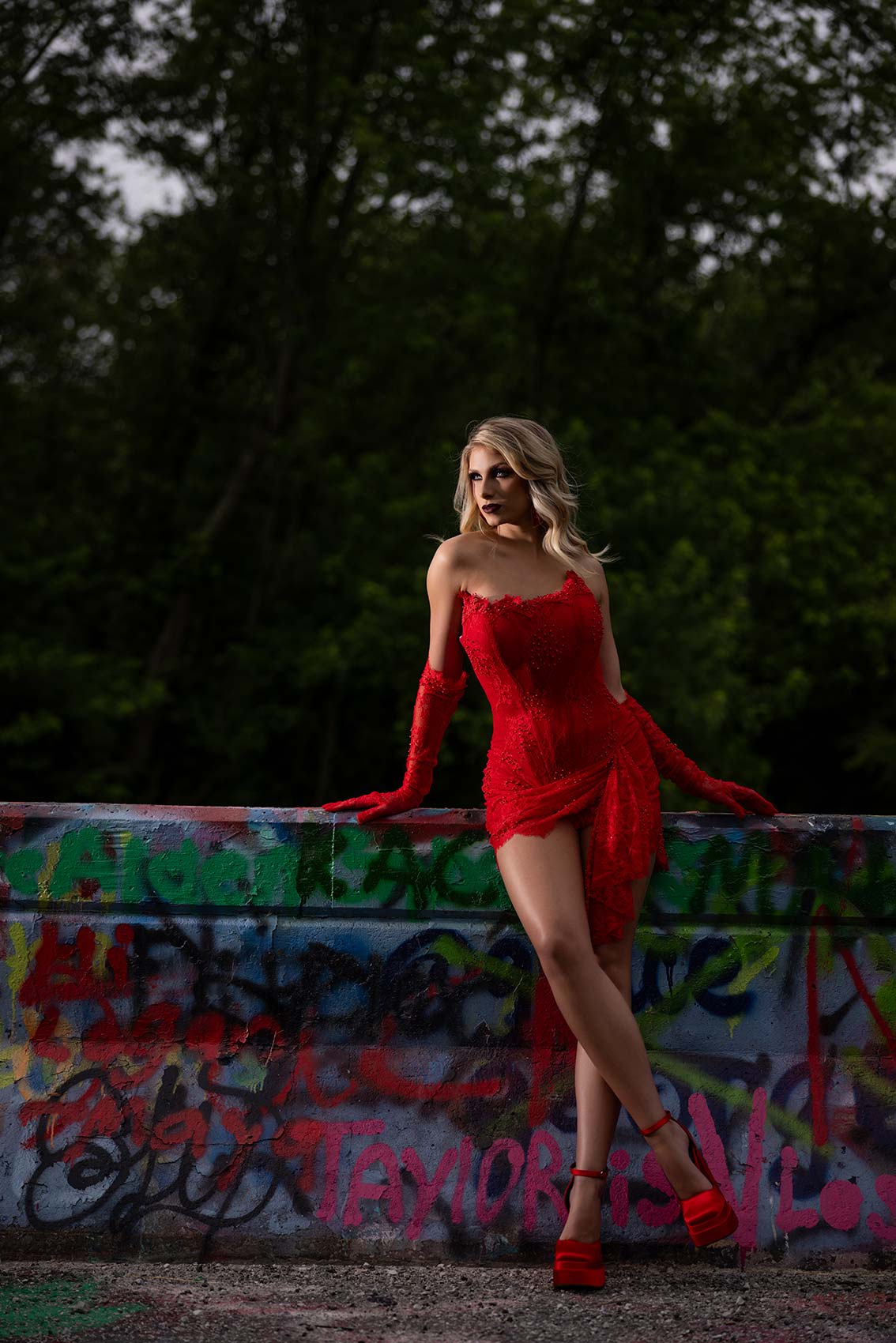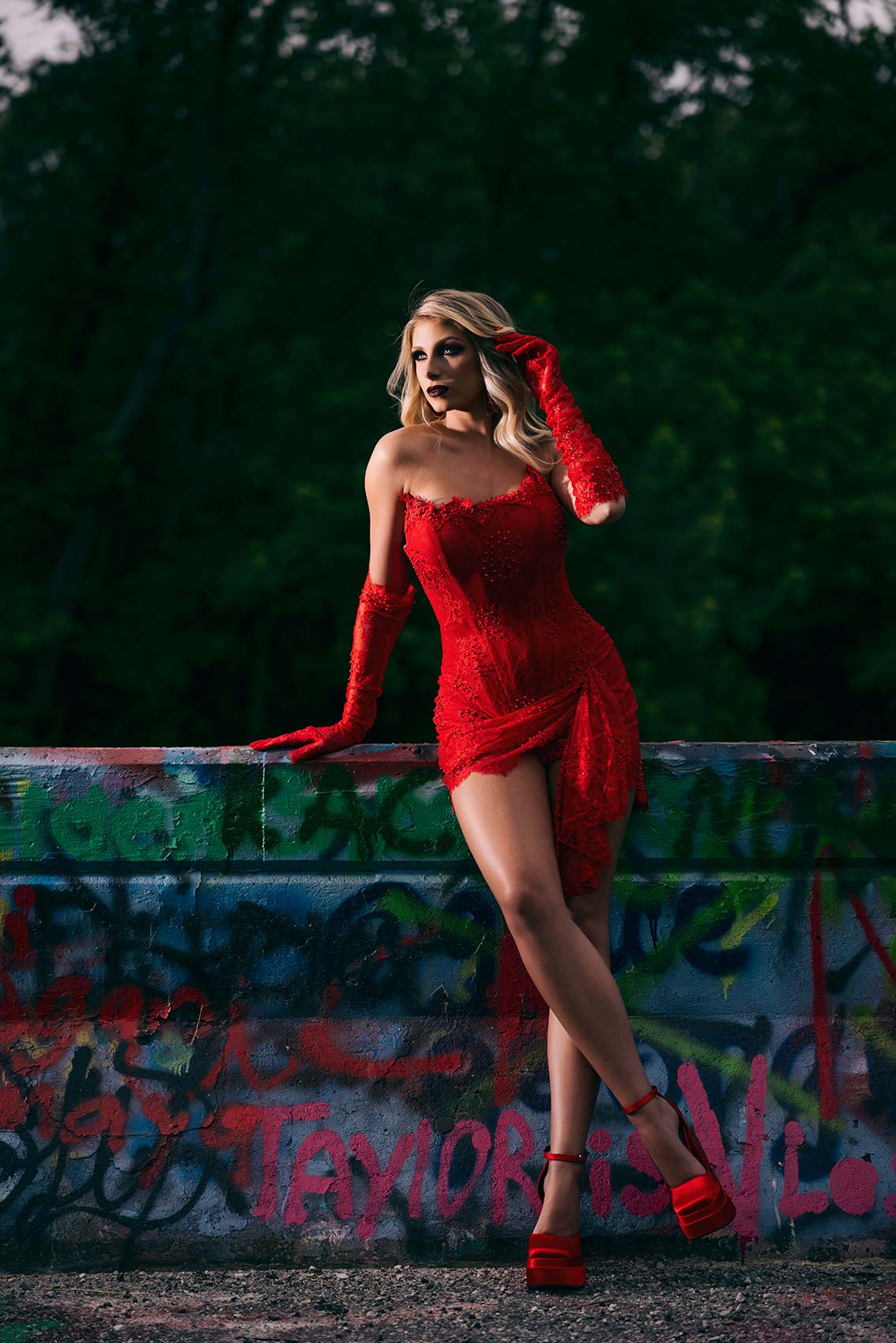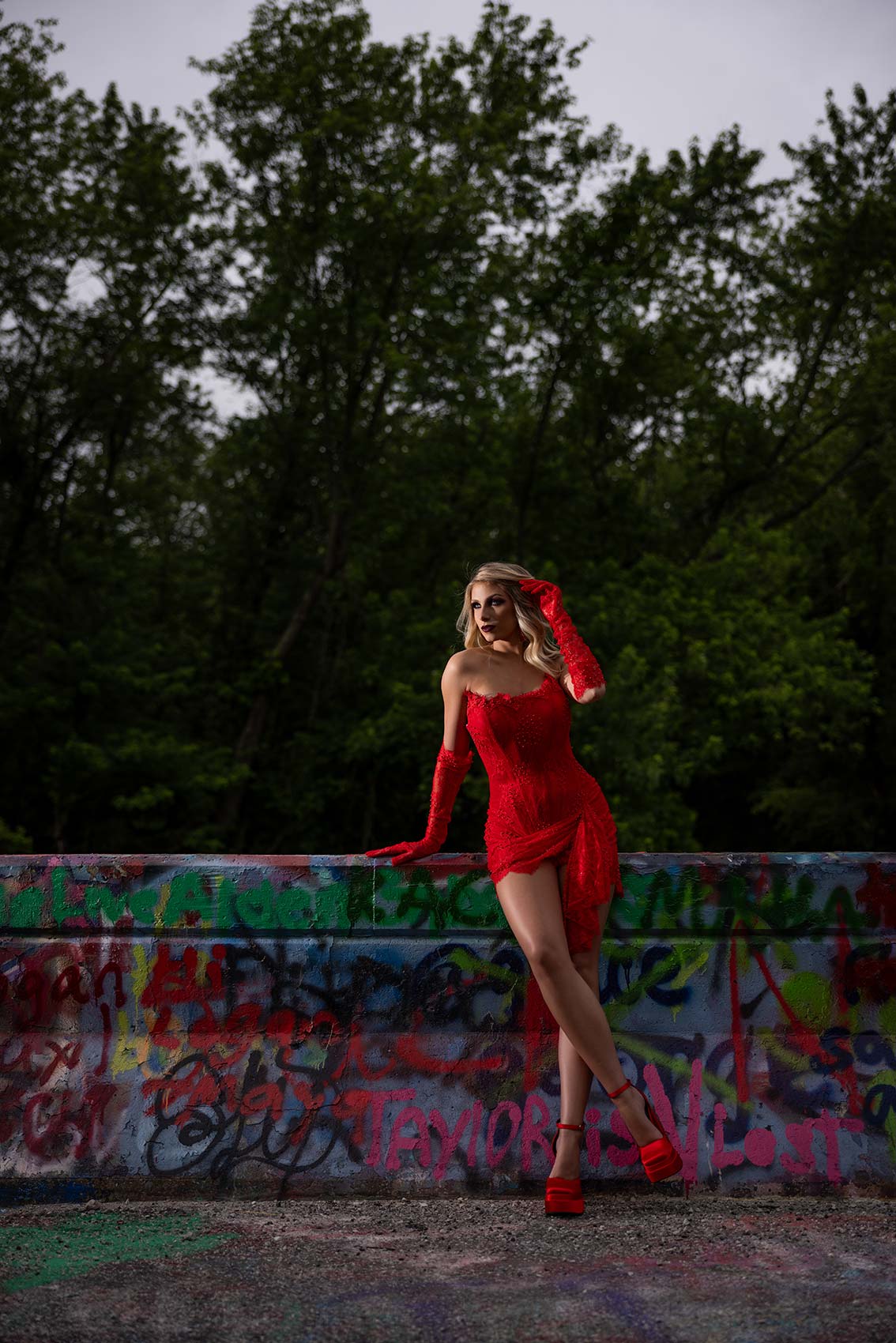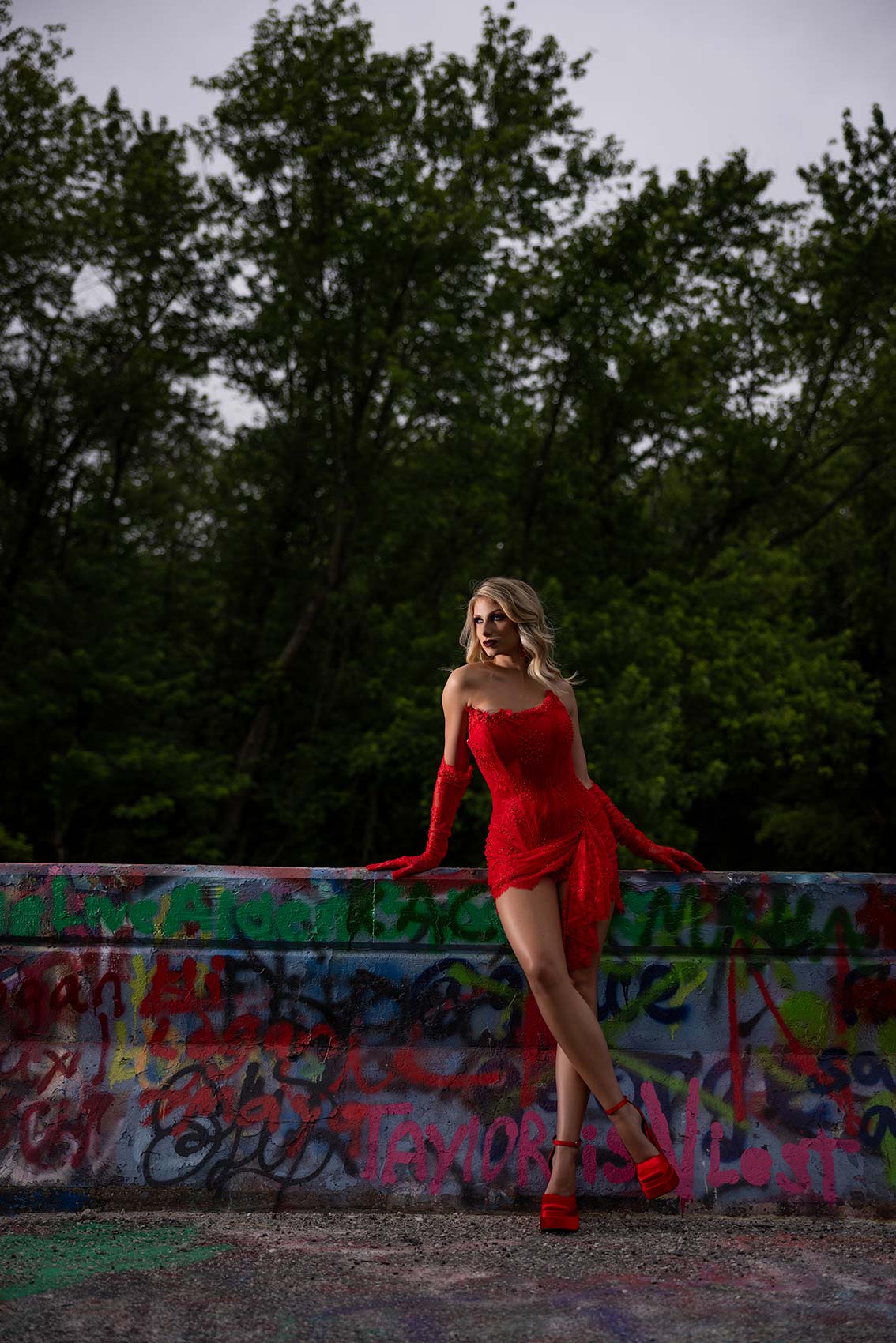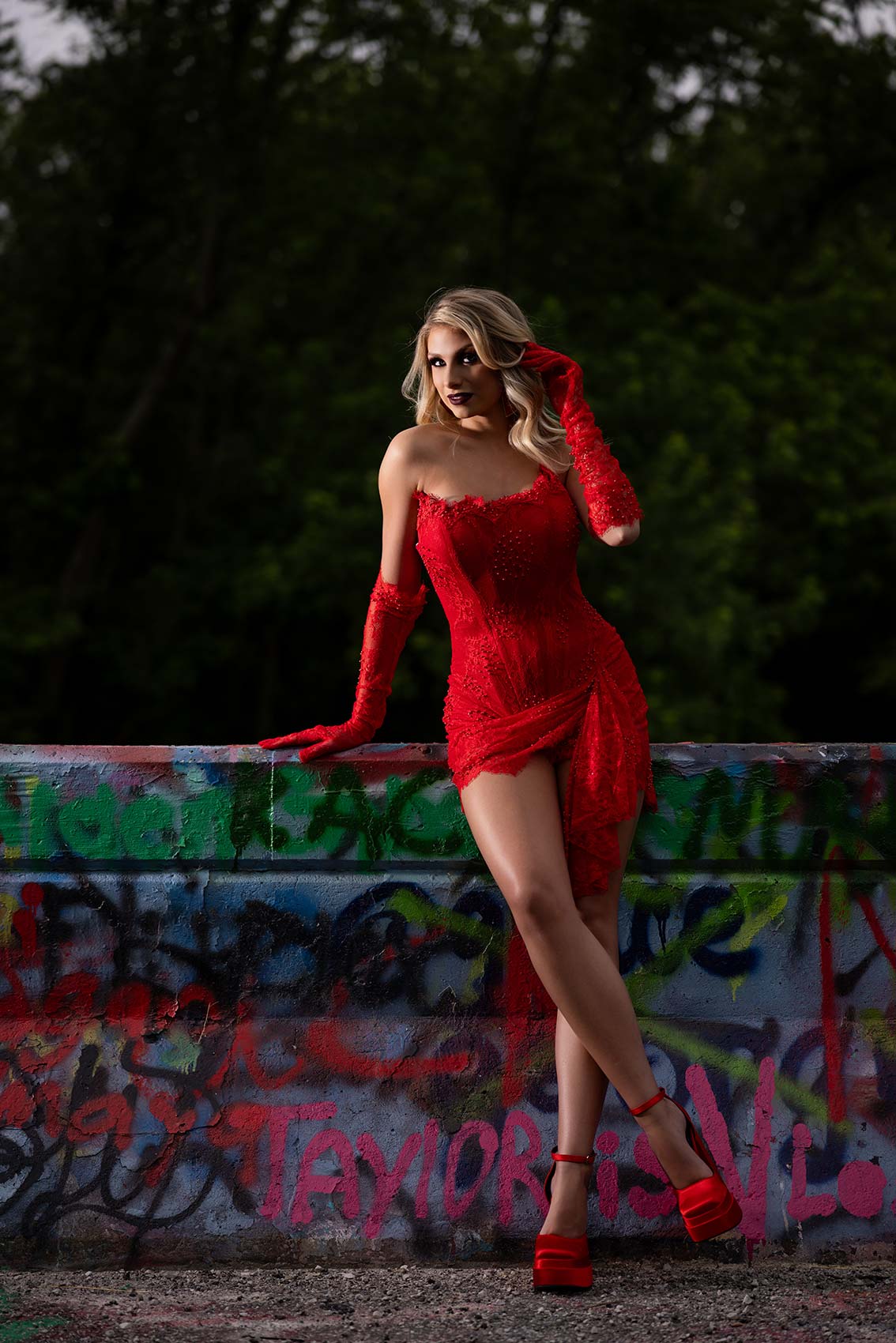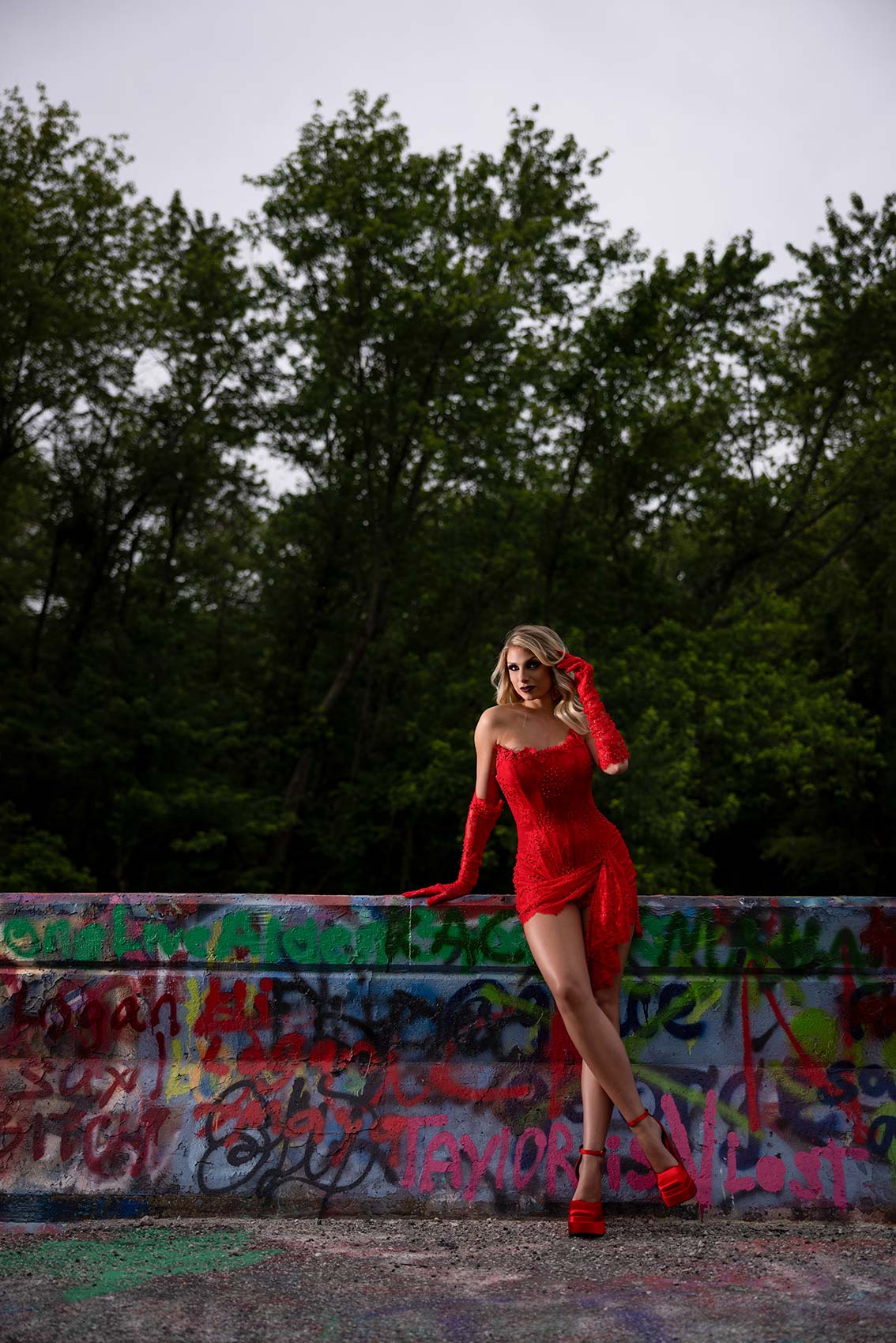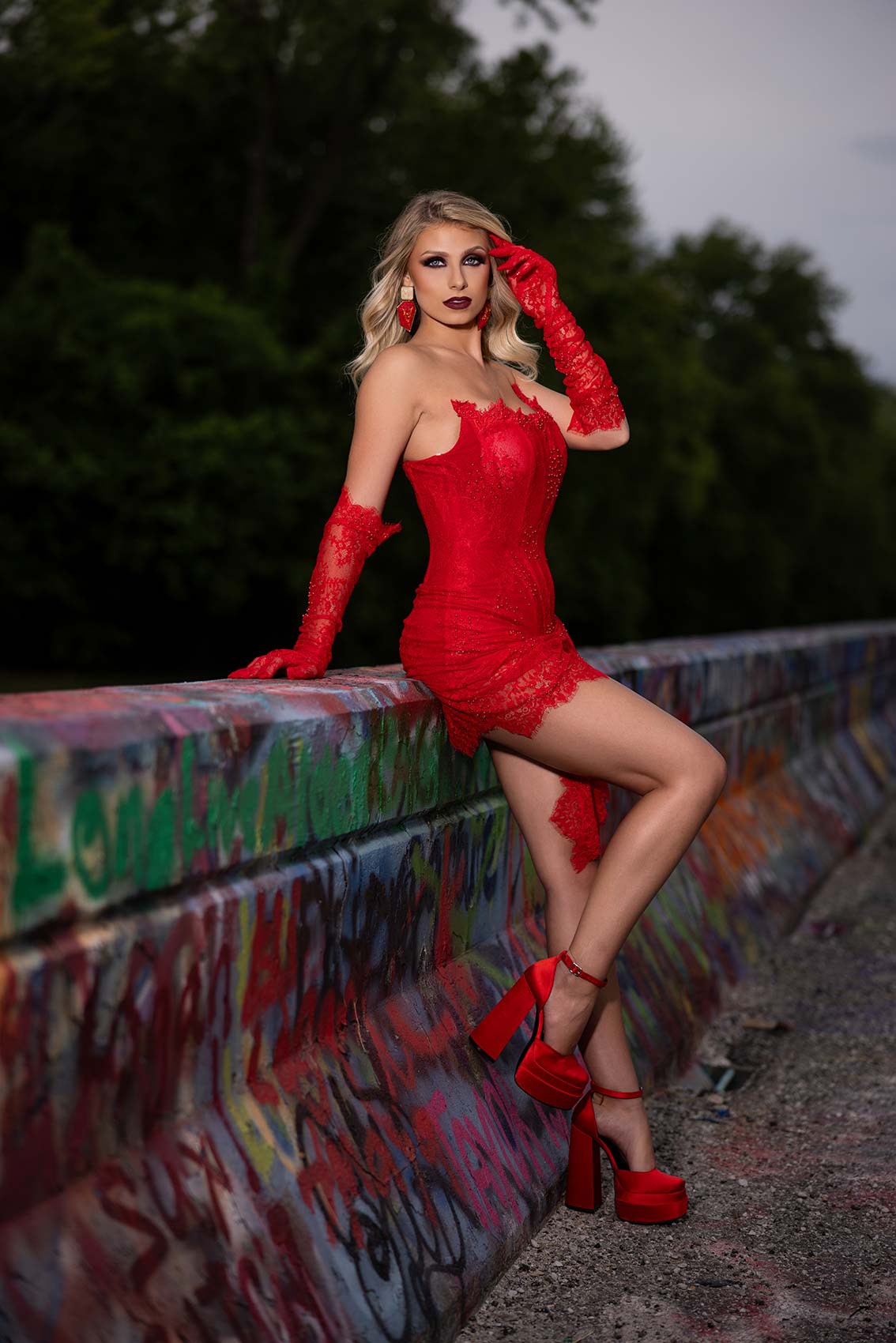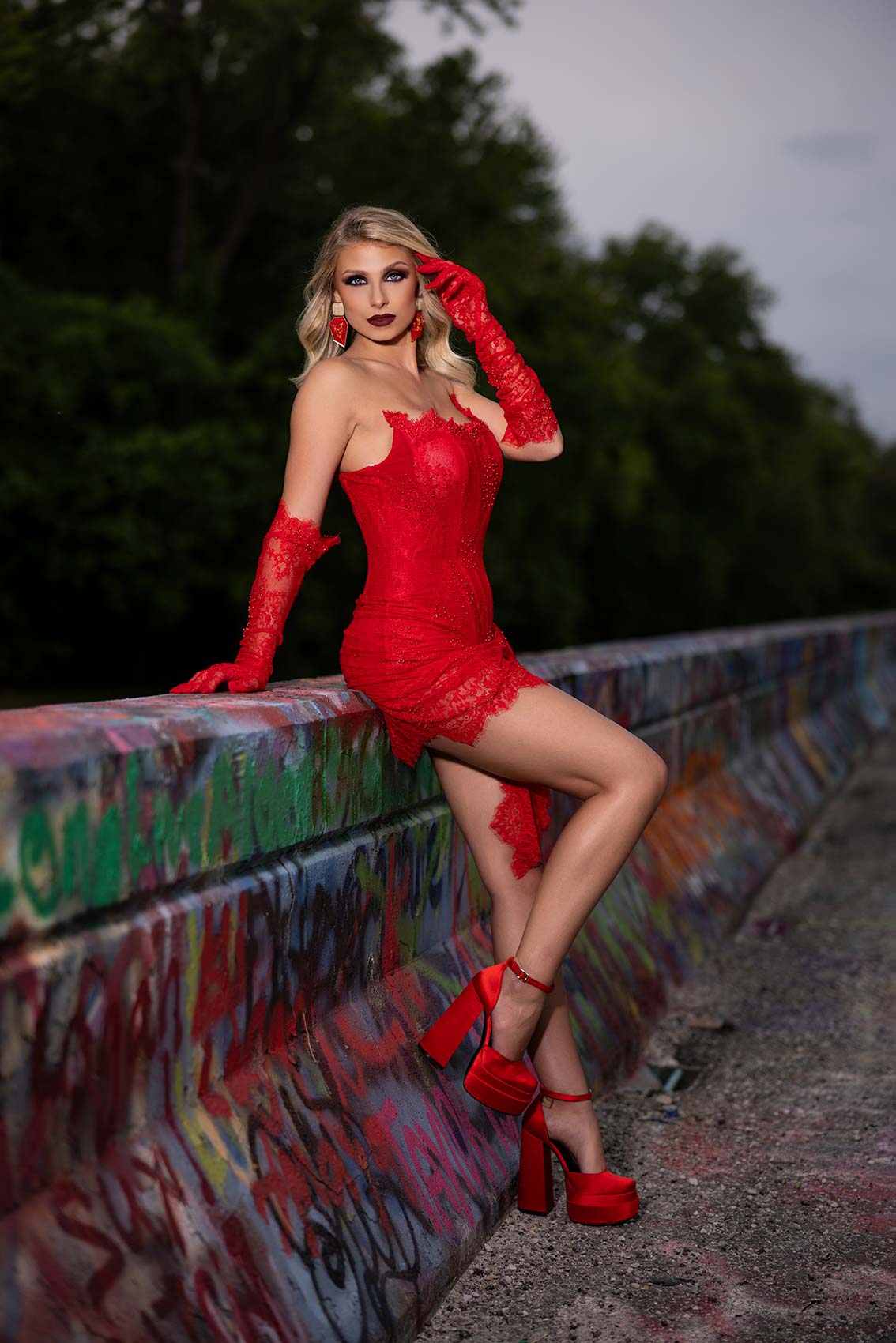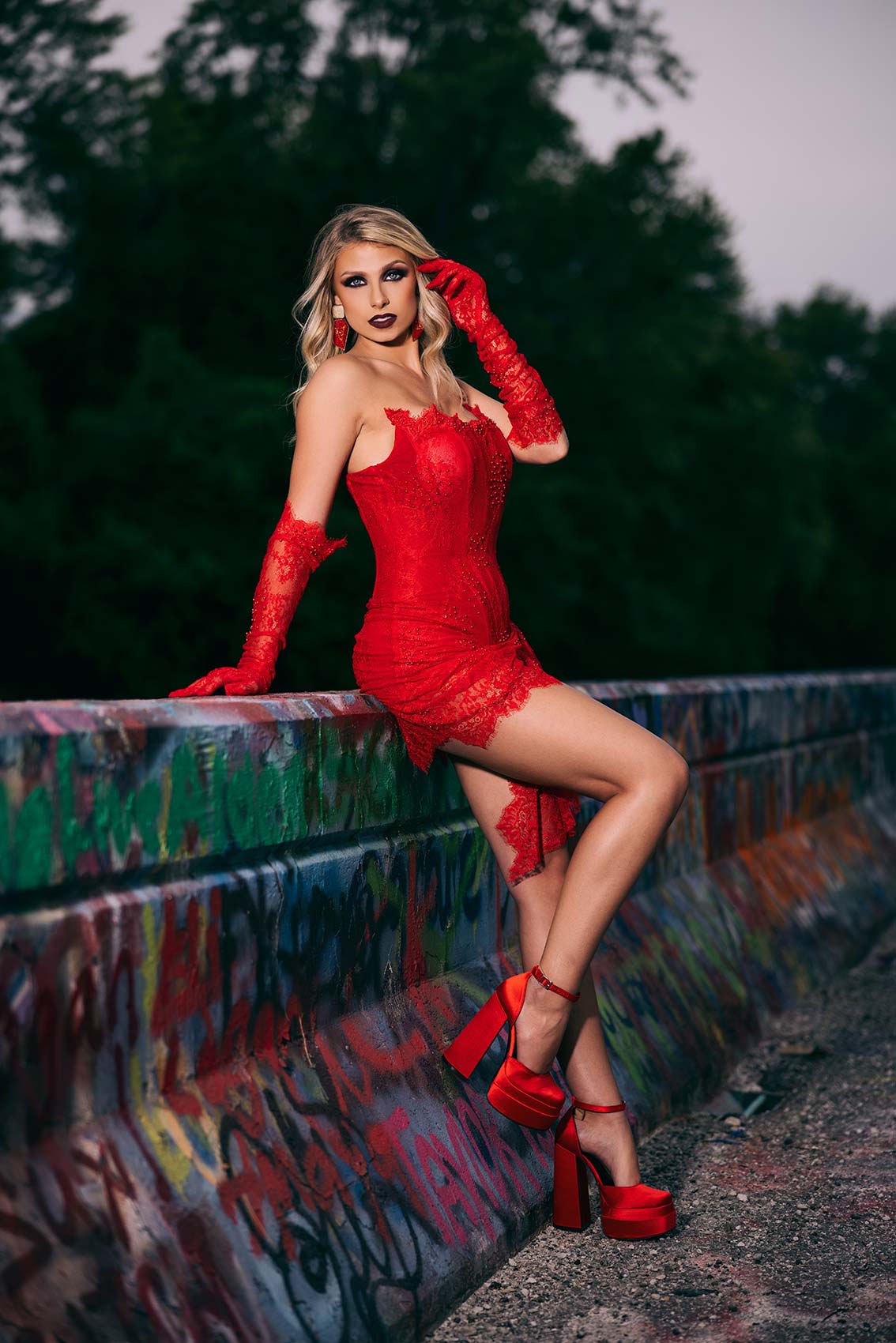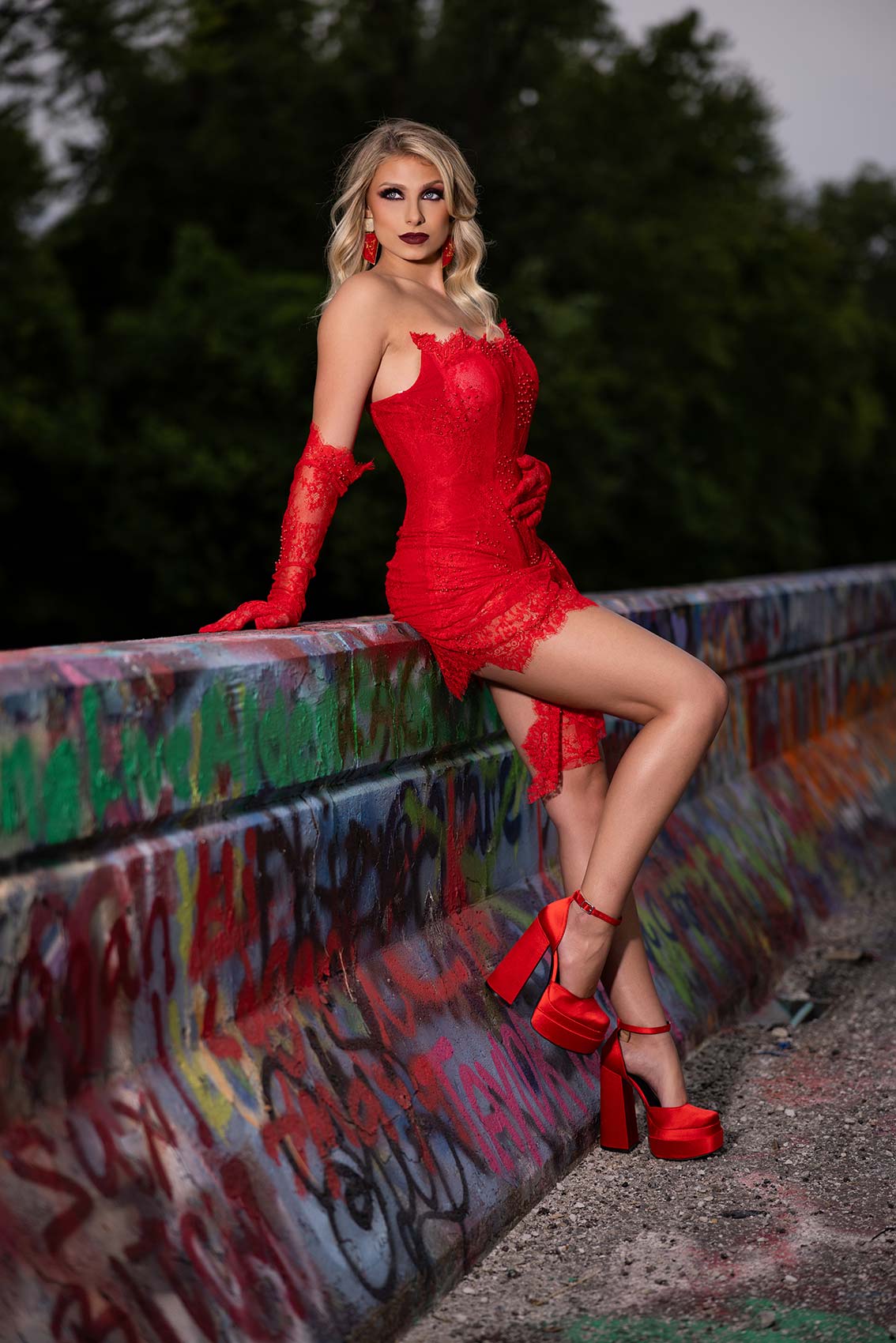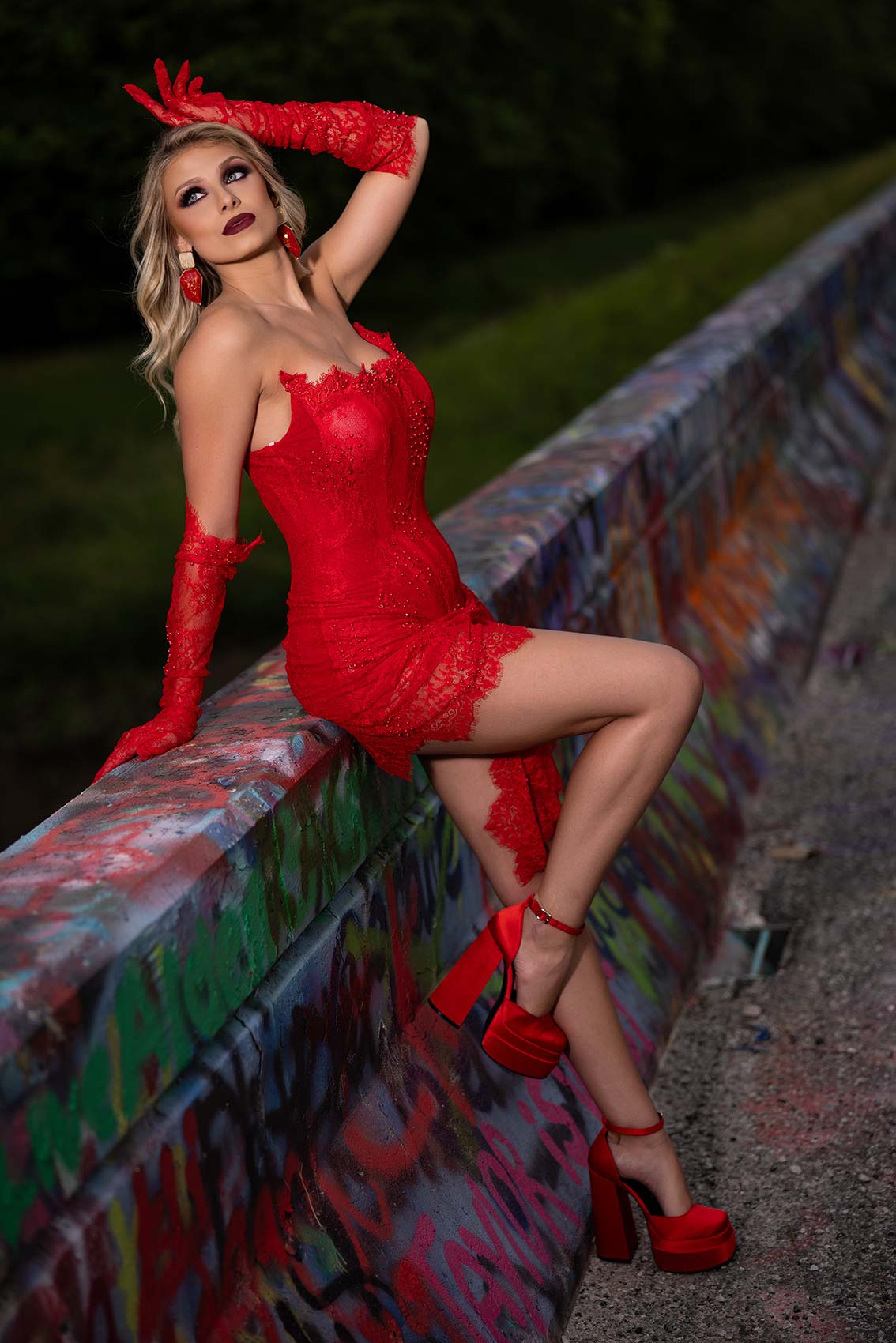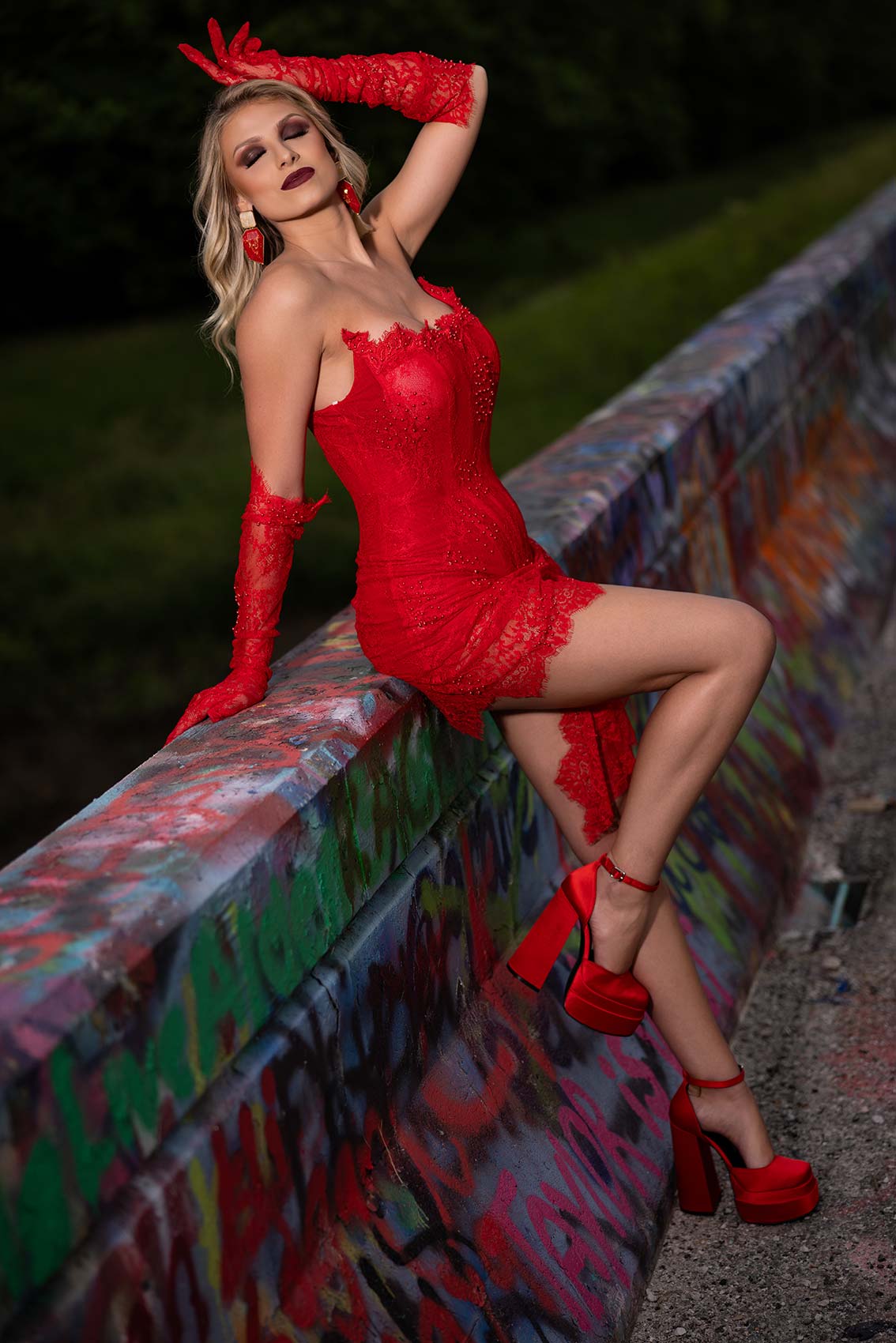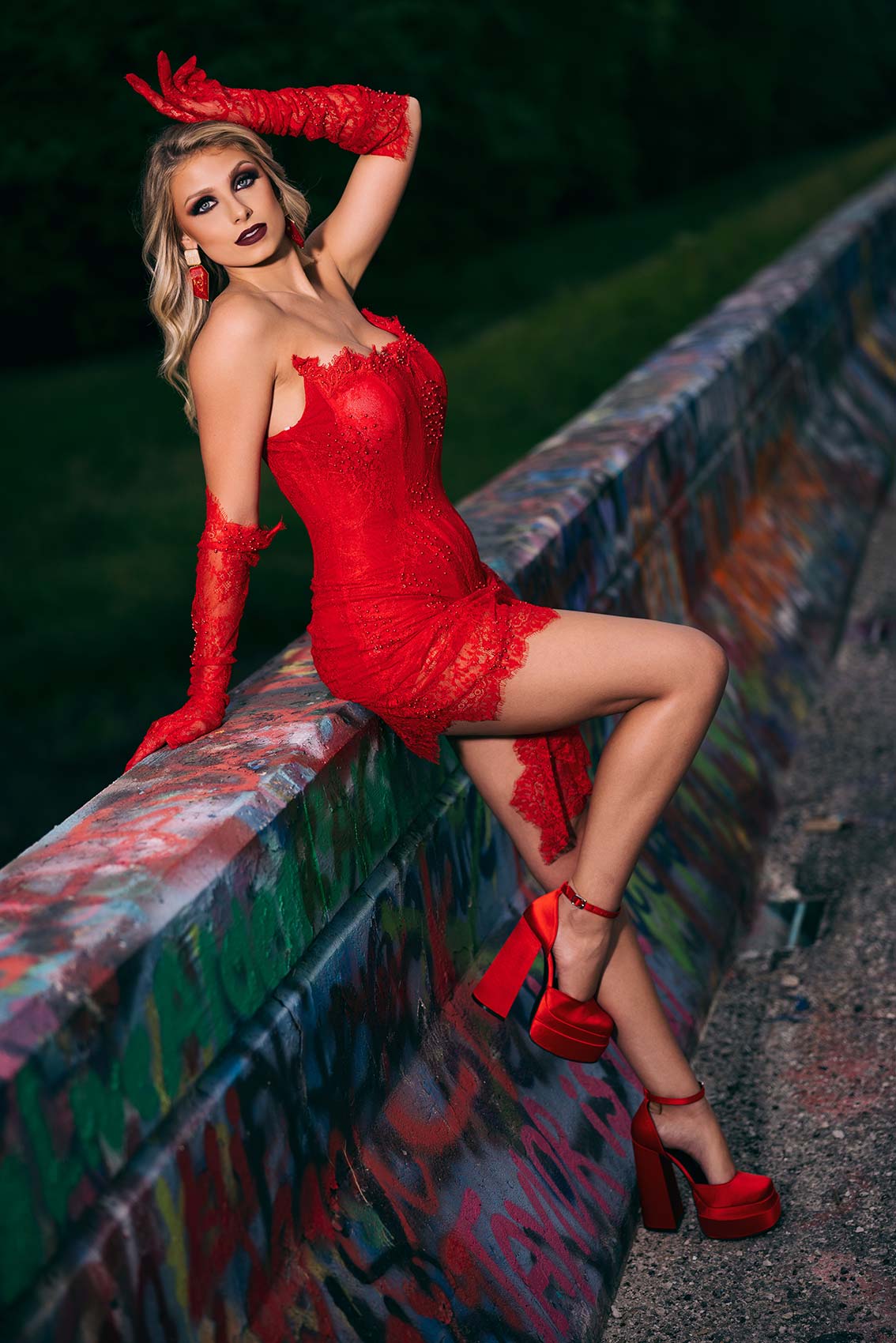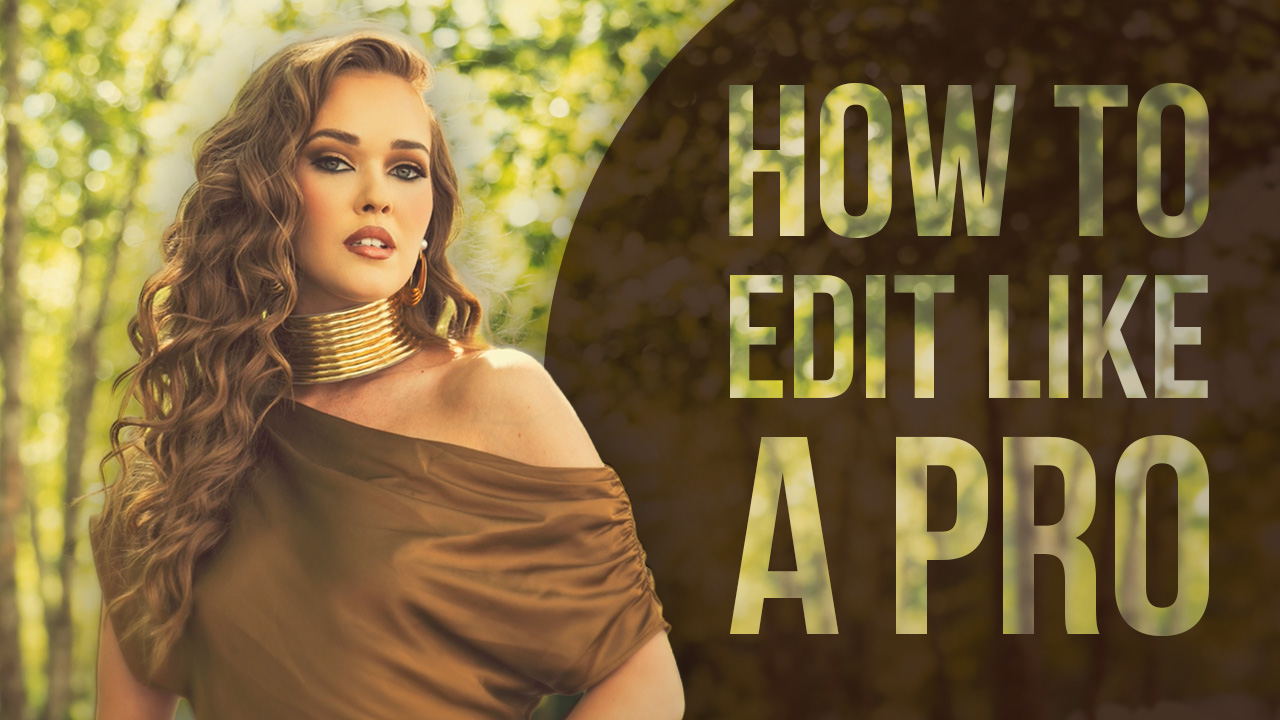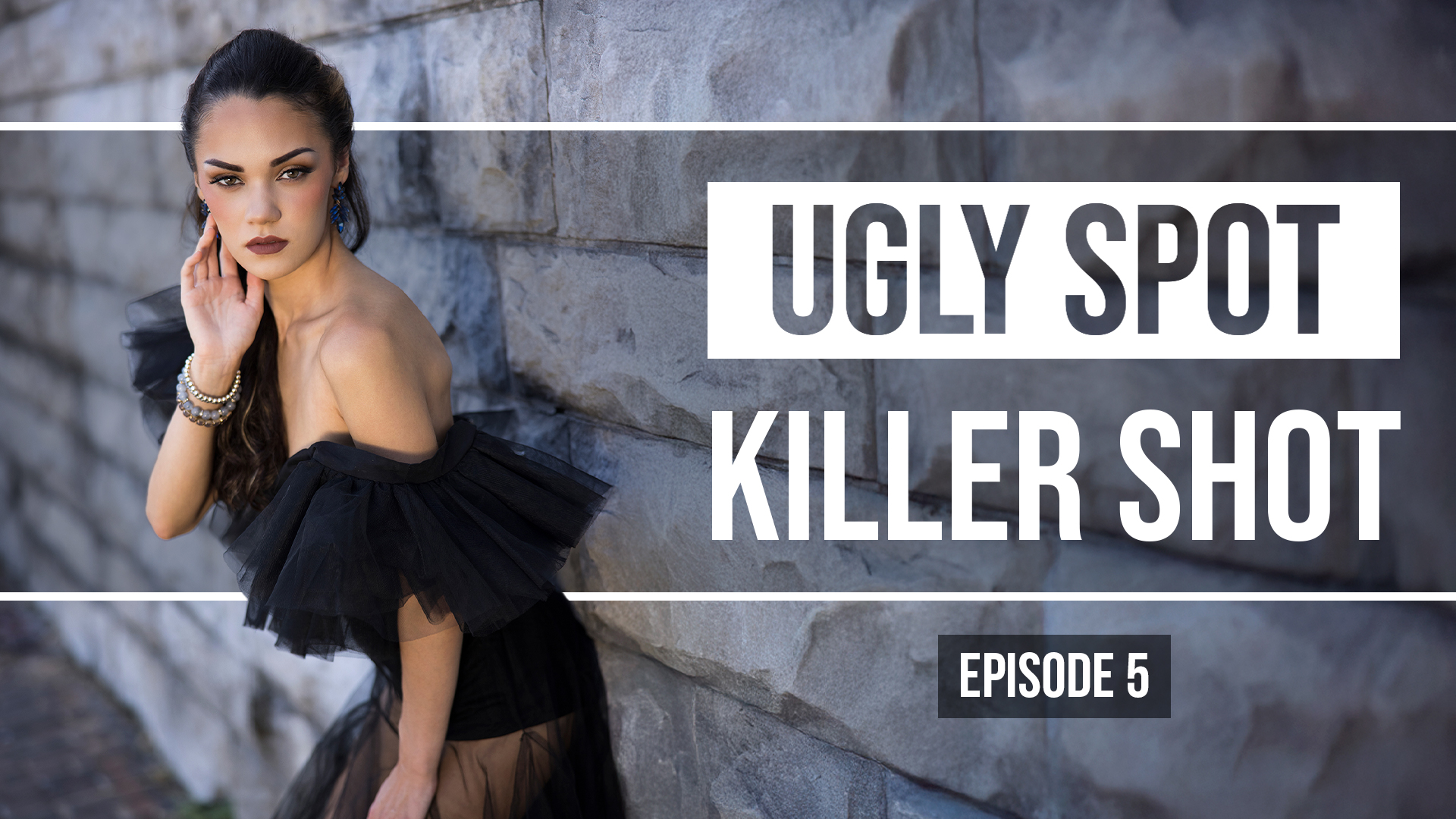Ready to take your off camera flash to the next level? In this photography video tutorial, I show you how to use the Westcott FJ400 to light your subject up and create dark and dramatic portraits for your clients. Let’s get to it.
Equipment Used:
Camera: Canon EOS R5
Lens: Canon RF 28-70mm F2
Light: Wescott FJ400
Team:
Photographer: Sal Cincotta
Model: Heather
Hair & Makeup: Brandi Patton, ReFine Beauty
What’s up everyone? My name is Sal Cincotta. Today, we’re here on location in O’Fallon, Illinois, and we are going to do some dramatic lighting for some portraits here on location. Let’s talk through it. We are using the FJ400 for this, and let me give you some of the spec.
So, for the FJ400, we’ve got over 400Ws with a recycle time of 0.9 seconds at full power. That is incredible power and recycle time that you’re going to get out of this unit. Over 500 full power shots on a single battery charge. And of course, you’ve got the most accurate color temperature available.
Color temperature is super important when you’re photographing. If you don’t get consistent color in every strobe you fire or every shot you take, that color temperature variance will be too high. When you move from frame to frame in Lightroom or Photoshop, you’ll have to color-correct each image to make them all look the same.
So, color temperature—when you’re looking at any flash, for that matter—that variance is very, very important. It’s something I think most photographers miss. I’m very happy with the Westcott unit, the 400Ws, and the price point. Plus, this zoom reflector is going to give us a huge throw, amplify the power, and it will create a more dramatic-looking portrait.
All right, so we’re here on location. We got the always beautiful Heather with us, and we are going to do some dramatic portraits. So, let’s just walk through it. Super simple how we get set up for this. The first thing I’m doing is create a much much darker scene on camera.
Now, we’re lucky here; it’s a bit of an overcast day. The sun’s not out, so it’ll be easier for us to darken the scene. I’m aiming for dramatic. To me, dramatic means more contrasty, with a significant difference between highlights and shadows. I don’t want an evenly lit portrait; I want the background to be dark.
So, the first thing I’m doing is setting my camera to ISO L, low, at ISO 50. Nikon, Sony, Canon—all have this setting somewhere, so figure out how you can do it. We’re going to set ISO to low. I am photographing this at f/2, so I would encourage you to go to f/2.8. I want that shallow depth of field, which is going to require us to use high-speed sync here.
I’m just going to take a picture of this scene, and what you’re going to notice is a very dark scene.
And that’s because I’m three stops underexposed. It’s going to be different wherever you’re set up, but the point is, it’s going to be much higher than your sync speed, which is 1/200 of a second. That’s where high-speed sync kicks in. Almost all of today’s flashes operate at high-speed sync, as do your cameras. Now, you may have to look it up online; some cameras have to be manually put into high-speed sync. With the Canon system, it automatically goes into it.
So, at 1/6400 of a second, everything’s black. I’m three stops underexposed. When I start shooting, you’ll notice I’ll probably adjust to get what looks and feels right. But just out of the gate, my first shot is super underexposed, so the camera’s set up perfectly. Now, what I’m going to do is bring in flash. Think of it this way: the camera is going to expose for the scene. The flash is going to illuminate our subject, making her stand out. That’s how we’re going to get this going.
So, in the flash unit, we’re at a power of seven, might even have to go to a power of eight or nine full power. Because when you’re in high-speed sync, the flash is actually working significantly harder to get that flash power there. And I’ve got other videos on high-speed sync and how it works. Just know that when you go into high-speed sync, a normal speed light is not going to be able to push out enough power. So, you need as much as you can.
All right, so notice the distance here. If we just measure it out, three, six, nine, we’re about 10 to 12 feet away with the light source. And that’s at about power of seven right now. So, now, we’re going to take this shot. I want this dramatic portrait. I like the way the trees and the leading lines are all shaping into her. Now, this is pushing the camera to 1/8000 of a second. Let’s see what happens here.
And so, it’s a little too underexposed, but it looks pretty good, honestly. So, what I’m going to do now is come off that full three stops and move to almost two stops underexposed. I’m going to take another test shot, and now I feel like we’re completely dialed in.
And so, this image you’re seeing on the screen, compared to what you’re seeing on that camera, is all being controlled by me. I’m underexposing this by just over two stops, and then we’re filling in all that darkness to light our subject up with the flash. That’s how you do it. That’s how quickly you can get dialed in. What did we do? Three or four shots to get dialed in, super quick and easy. Don’t be afraid of it, embrace it. And then, you go from there, okay? Let’s start working.
Now, just so everybody knows, I like this lower angle, shooting up on females. It looks very powerful. Shooting up is more powerful than shooting down and minimizing. I really like this as an option. It just depends on the look and feel you’re going for.
You can see how dark and dramatic these are right out of the camera. So, we’re not doing this in Photoshop or anything like that. Now, I want to move to a secondary scene, so let’s go down here. Let’s get that light in. This is another thing to keep in mind, guys: we already know that at about 10 to 12 feet, the light was at the right ratio. So, you should probably be right about there. Now, what’s happening is, as you’ll see on the screen, the light is illuminating, quite frankly, too much of her body.
So, the way we’re going to fight this is Mom’s going to move in a crescent. This should put the right side of her body in more shadow and create more dimension. If I look at this, there’s a big difference there. Or maybe I should say, it’s a subtle difference in where we moved her, but a big difference in the final outcome.
Now, what I’m getting is a little bit of short light, something that looks like Rembrandt. It’s really interesting what we’re getting here. Let me lower this flash a little bit—half a stop. I can do it from the trigger. There we go.
All right, everybody, that is a wrap. Let’s give it up for Heather. We’ll see you in the next video.

